Quick and Easy Salmon Recipes
Find the best quick and easy salmon recipes to make for dinner tonight! All of these take less than 30 minutes, are full of flavor, and made with healthy ingredients.
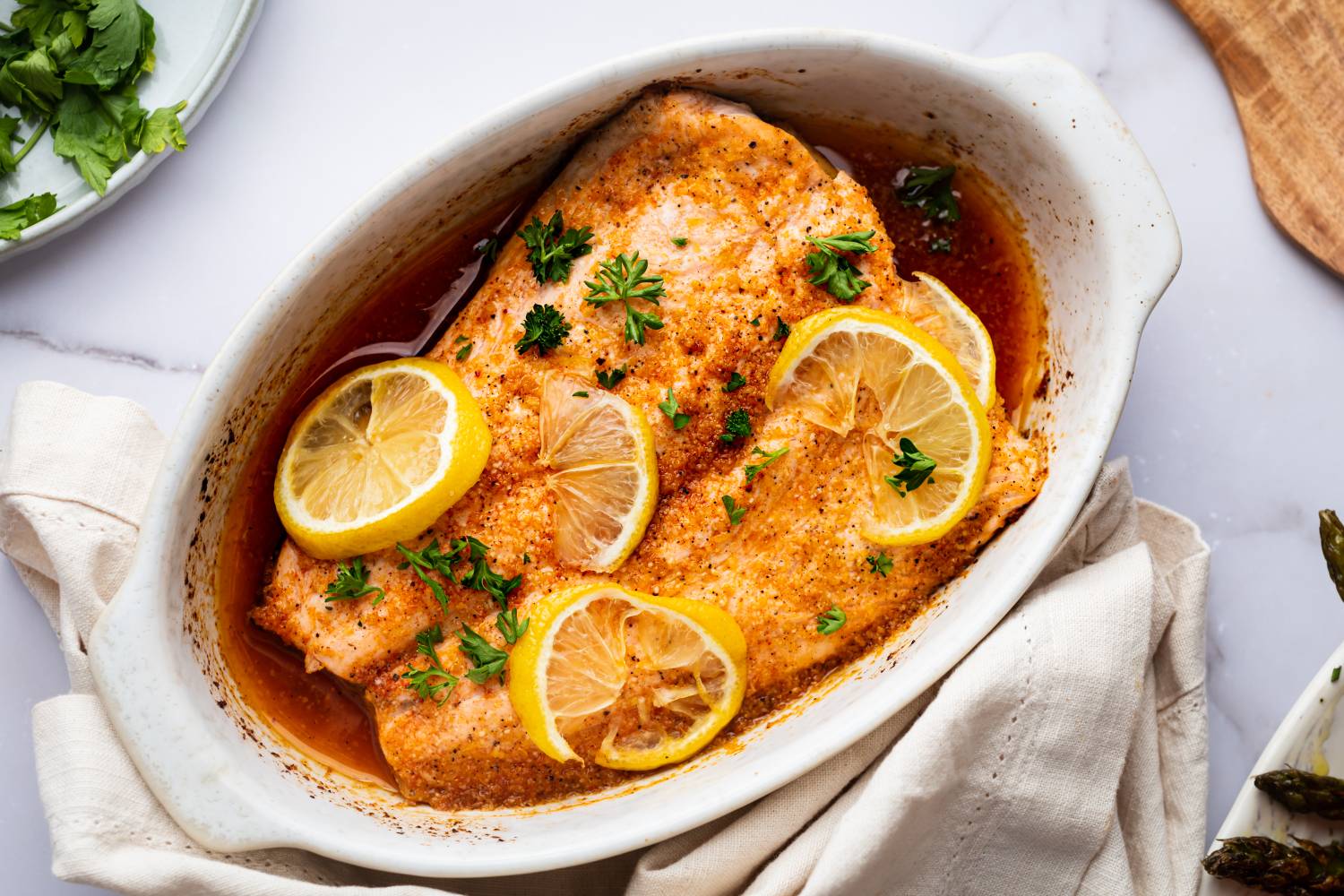
Table of Contents
I don't know about you, but when it comes to fish, salmon is one of my absolute favorites. Not only is it full of flavor and packed with nutrients, but it's also a fish that you can find almost everywhere. Plus it is a great vehicle for flavors and can work with pretty much any spice blend, marinade, or topping you like.
So whether you are craving Mexican and want to try some delicious Salmon Tostadas, want Mediterranean with some Italian Basil Salmon, or just want a simple and delicious grilled salmon recipe, we've got you covered.
Essential Salmon Recipes
Think of these as the beginning recipes for cooking with salmon. They cover all the common cooking methods including baking, grilling, pan searing, broiling, and roasting. These recipes are easy to customize with any spices, marinades, and seasoning blends you like.
Pan Seared Salmon
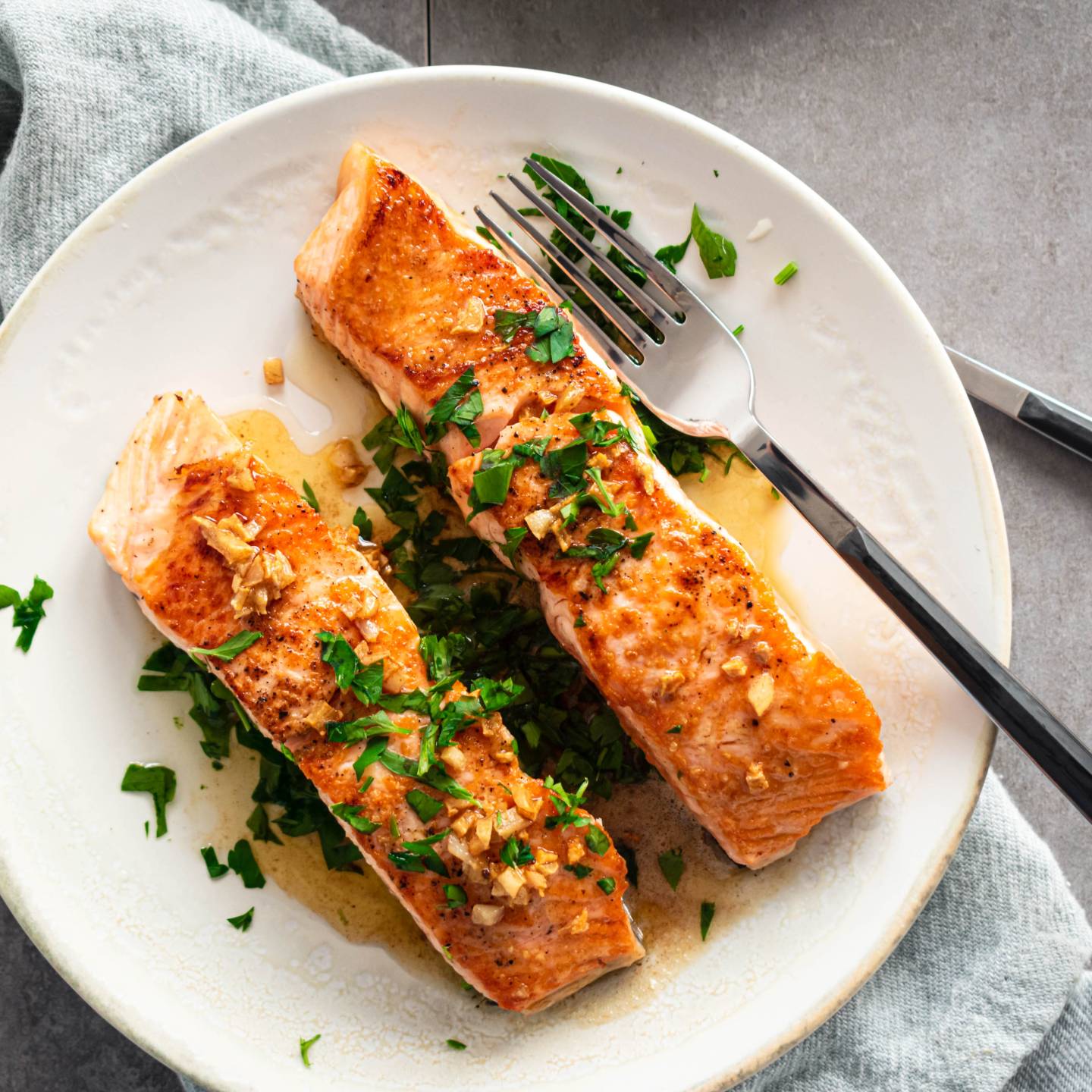
Pan Seared Salmon with Lemon Garlic Butter Sauce is easy to make, ready in just fifteen minutes, and makes you feel like a restaurant chef.
Easy Honey Garlic Broiled Salmon
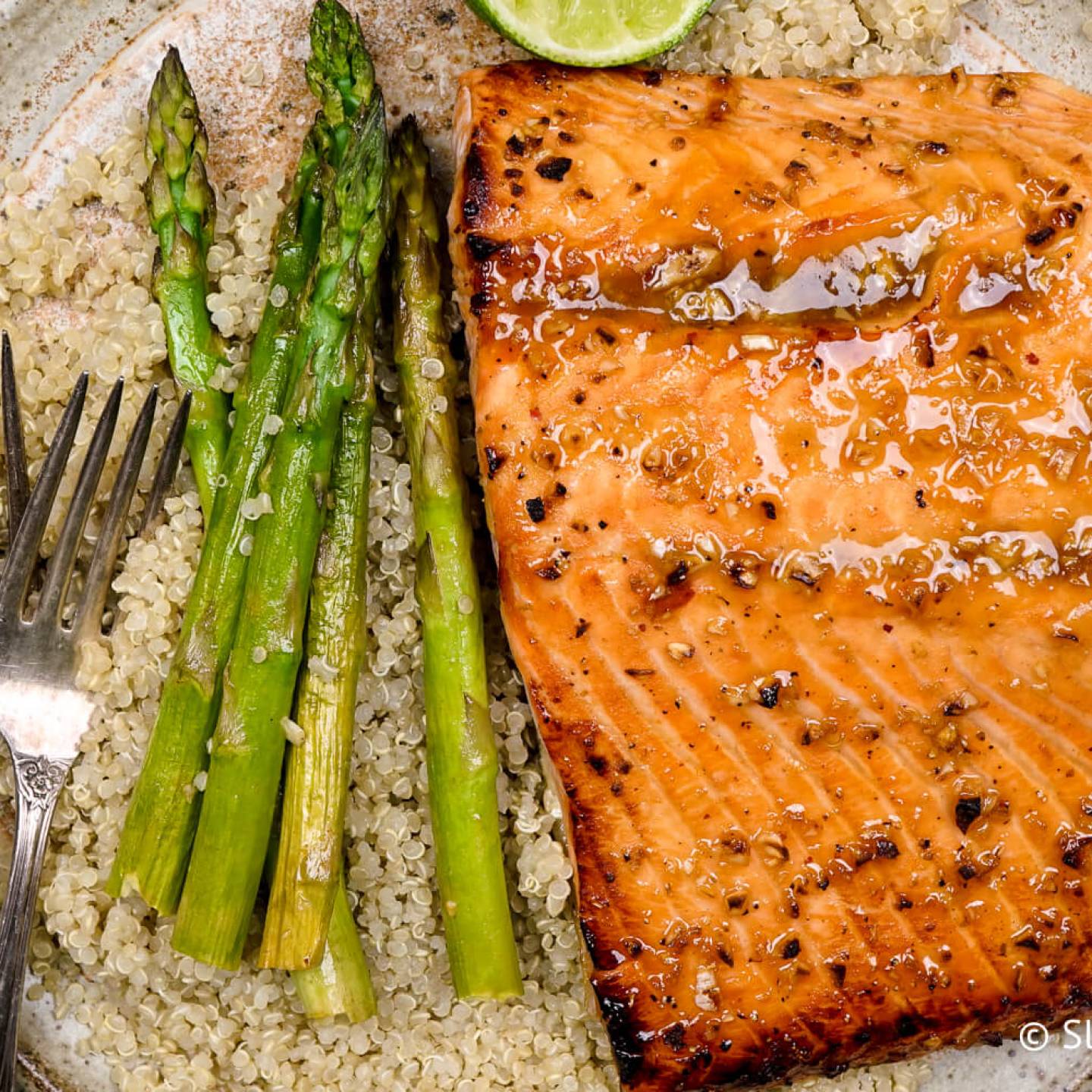
This Broiled Salmon with honey garlic sauce is ready in less than 15 minutes and so delicious. Learn how to broil salmon and get perfectly cooked fish every time.
Easy Grilled Salmon with Cajun Seasoning
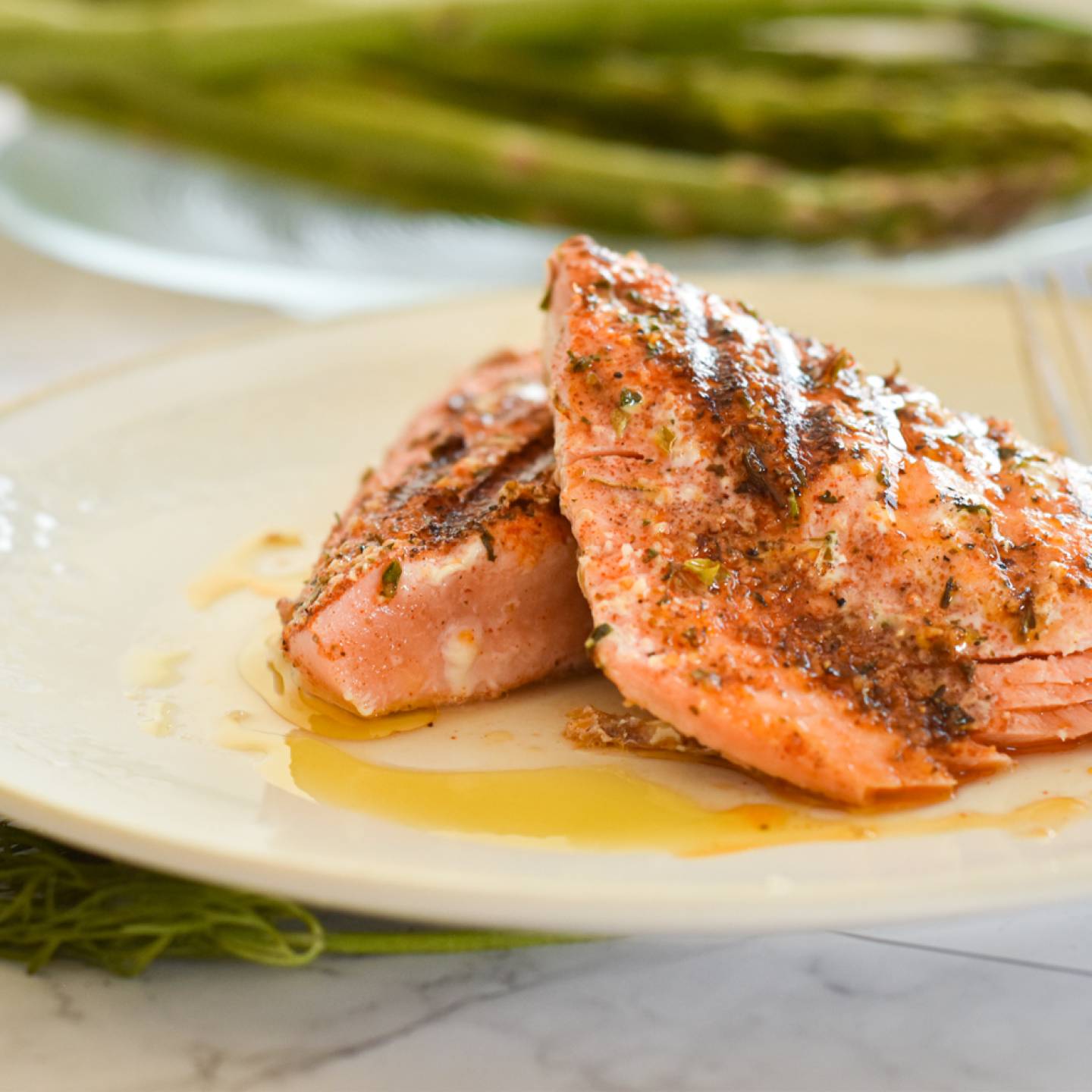
This Easy Grilled Salmon is ready in under 30 minutes and packed with flavor from a savory homemade Cajun spice rub.
Cilantro Lime Salmon in Foil
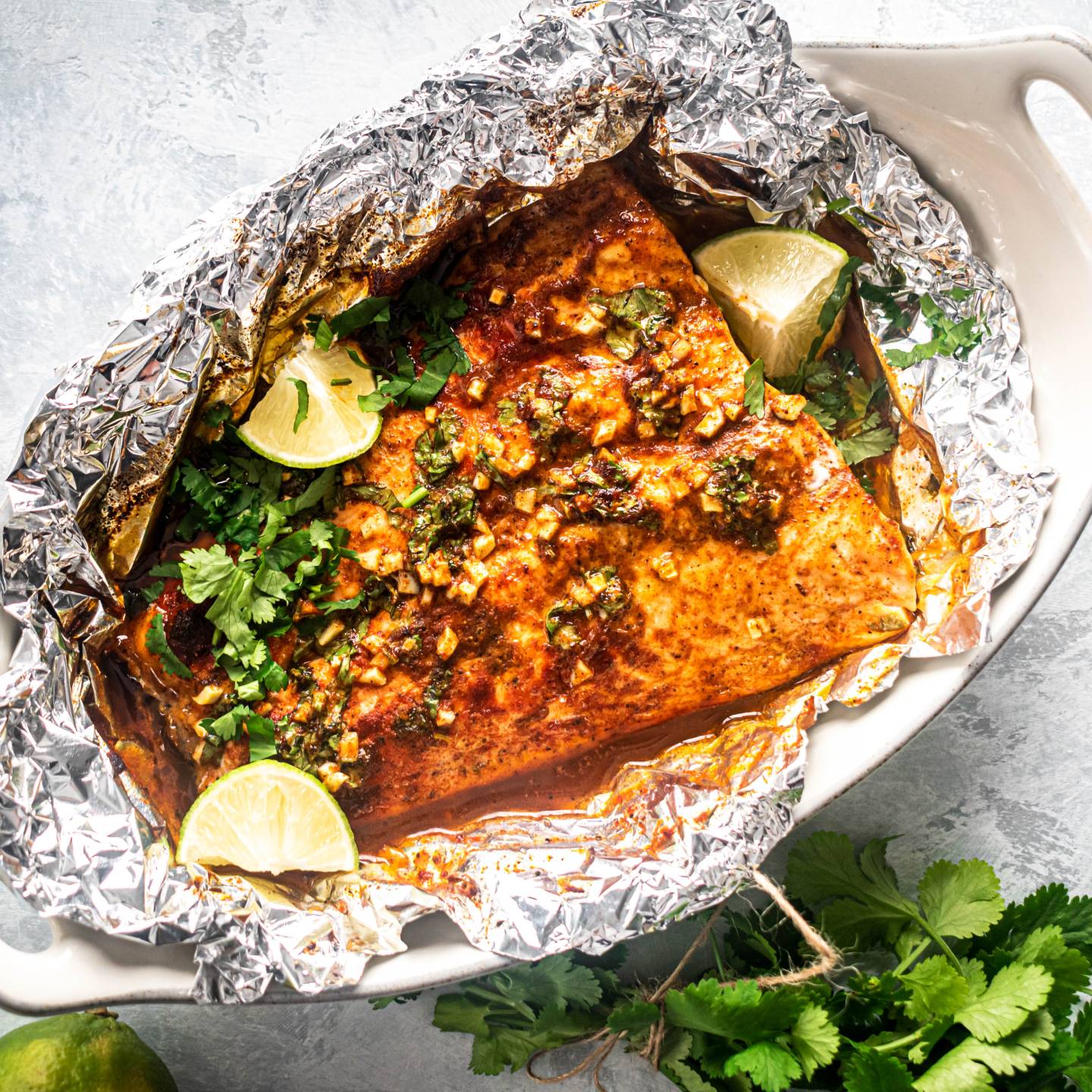
Baked Cilantro Lime Salmon with honey and garlic is an easy 20-minute dinner that the whole family will love. It's easy to make and is a must for anyone who loves cilantro.
Dijon Baked Salmon
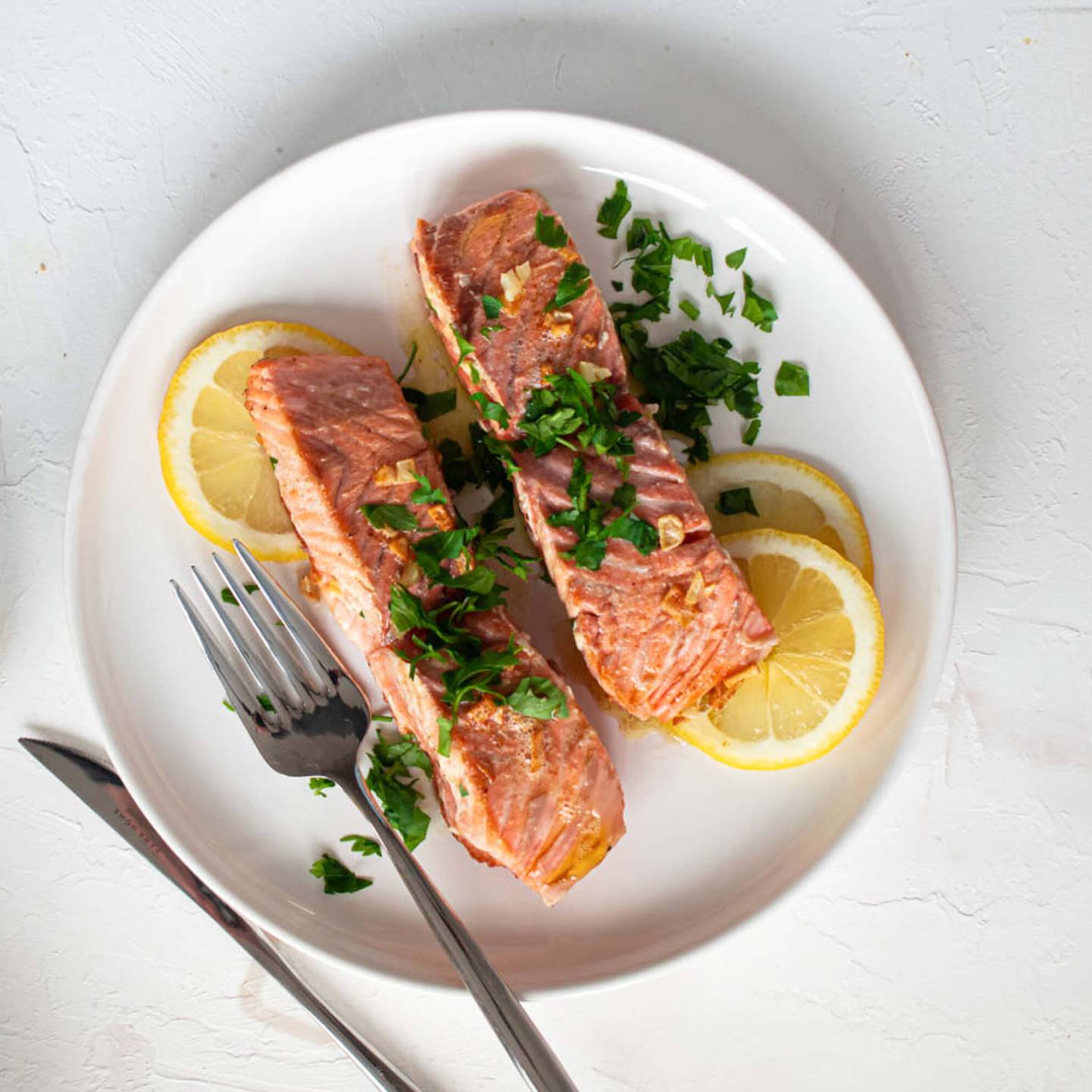
This Dijon Baked Salmon tastes like a restaurant dish but is made with just a few simple ingredients most people have on hand. Simple, healthy, and packed with flavor.
Blackened Salmon
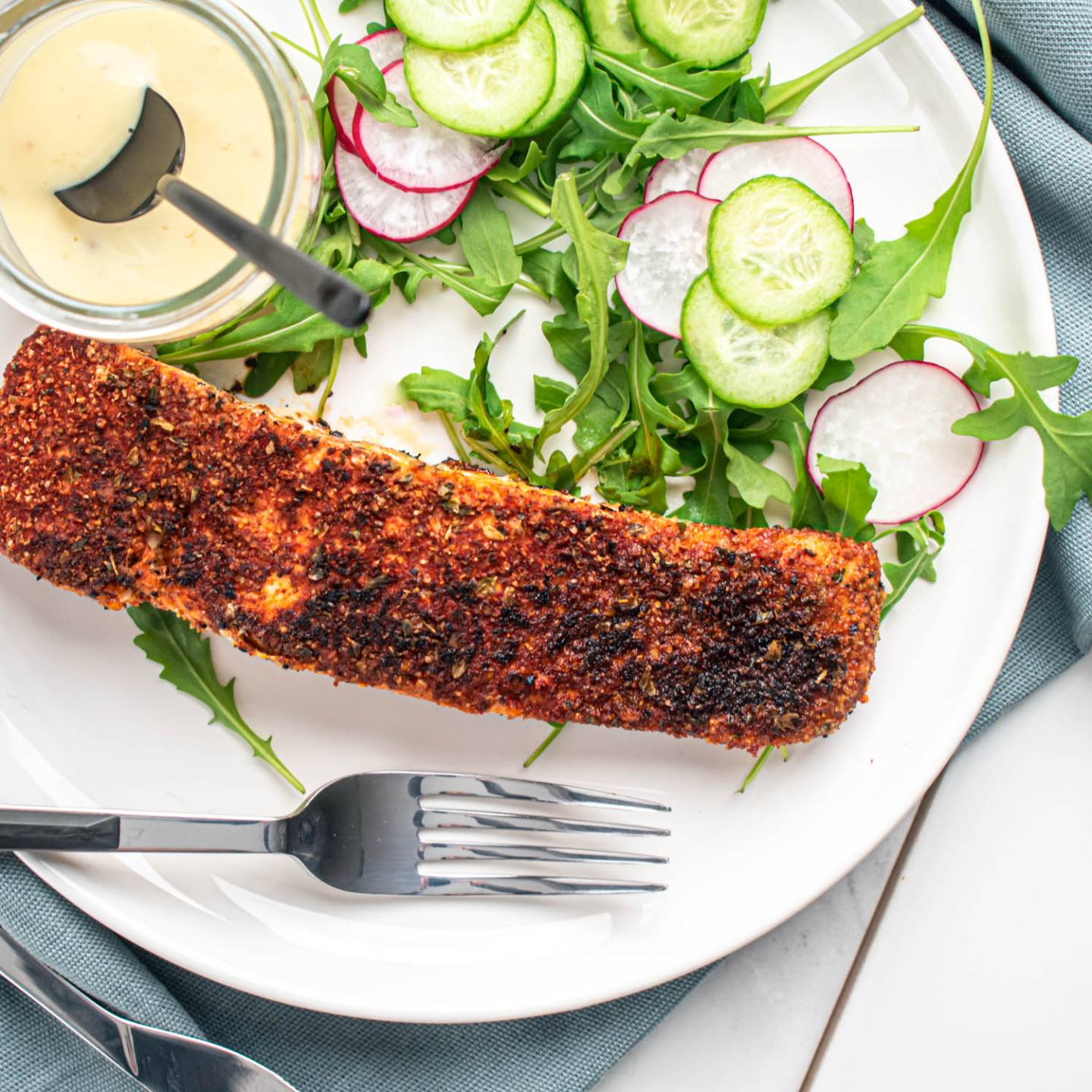
This Blackened Salmon is the best 15-minute meal you will ever make! Tender, flaky salmon coated in a delicious blend of spices and cooked until crispy in a skillet - it's so good and so easy.
Easy Baked Salmon Recipes
Baking salmon is one of the easiest and most foolproof ways to make salmon. All you need to do is season up the salmon using a spice blend, sauce, or glaze. Pop it in the oven for 10-15 minuets, and dinner is done.
This delicious Baked Lemon Pepper Salmon is made with just 5 ingredients in under 15 minutes! This salmon is full of flavor, easy to prepare, and family friendly.
This easy Brown Sugar Salmon is made with brown sugar, soy sauce, and dijon mustard for a delicious and healthy dish that comes together in just 10 minutes. Serve this delicious glazed salmon alongside rice and veggies for the ultimate weeknight dinner! This easy roasted salmon with sweet potatoes and asparagus is so easy to make and will quickly become a regular in your healthy eating routine. Mustard and Maple Glazed Salmon is a quick and easy healthy main dish that is made with just three ingredients that can be prepped and cooked in under 20 minutes. This Baked Garlic Lemon Salmon in foil is ready in less than 20 minutes and couldn't be more delicious with a sweet and savory honey, lemon, and garlic sauce. Plus the salmon comes out perfect everytime when it is baked in foil. This easy roasted salmon with sweet potatoes and asparagus is so easy to make and will quickly become a regular in your healthy eating routine. Cajun Salmon with an easy homemade seasoning made with spices you already have in your pantry that can be baked, broiled, pan seared, or grilled. This healthy dinner is ready in less than fifteen minutes and as good as any restaurant version. This coconut-crusted salmon is made with a simple spice rub using smoked paprika and onion powder. This fish recipe is bursting with flavor and has a delicious crispy coconut coating!
Lemon Pepper Salmon
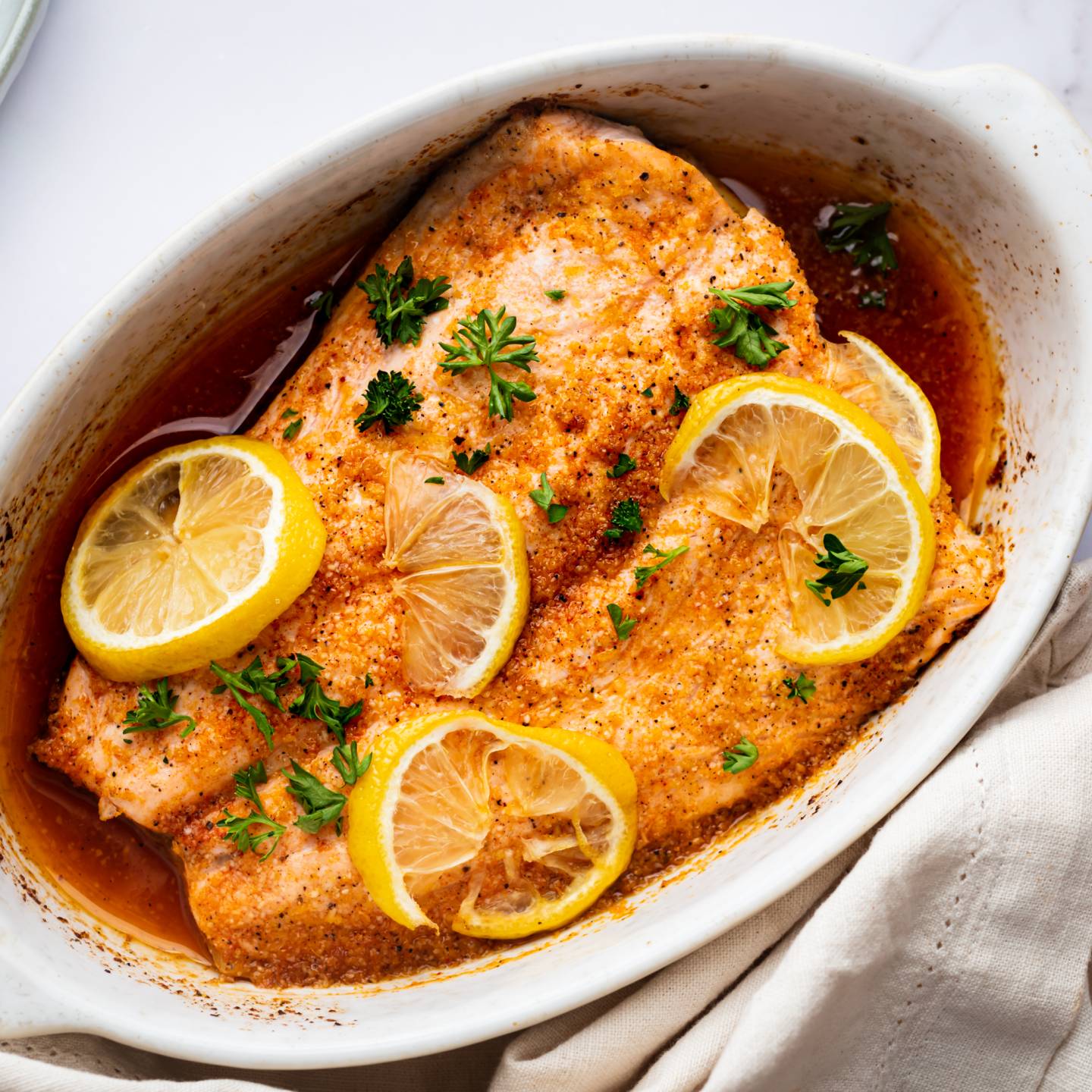
Brown Sugar Salmon
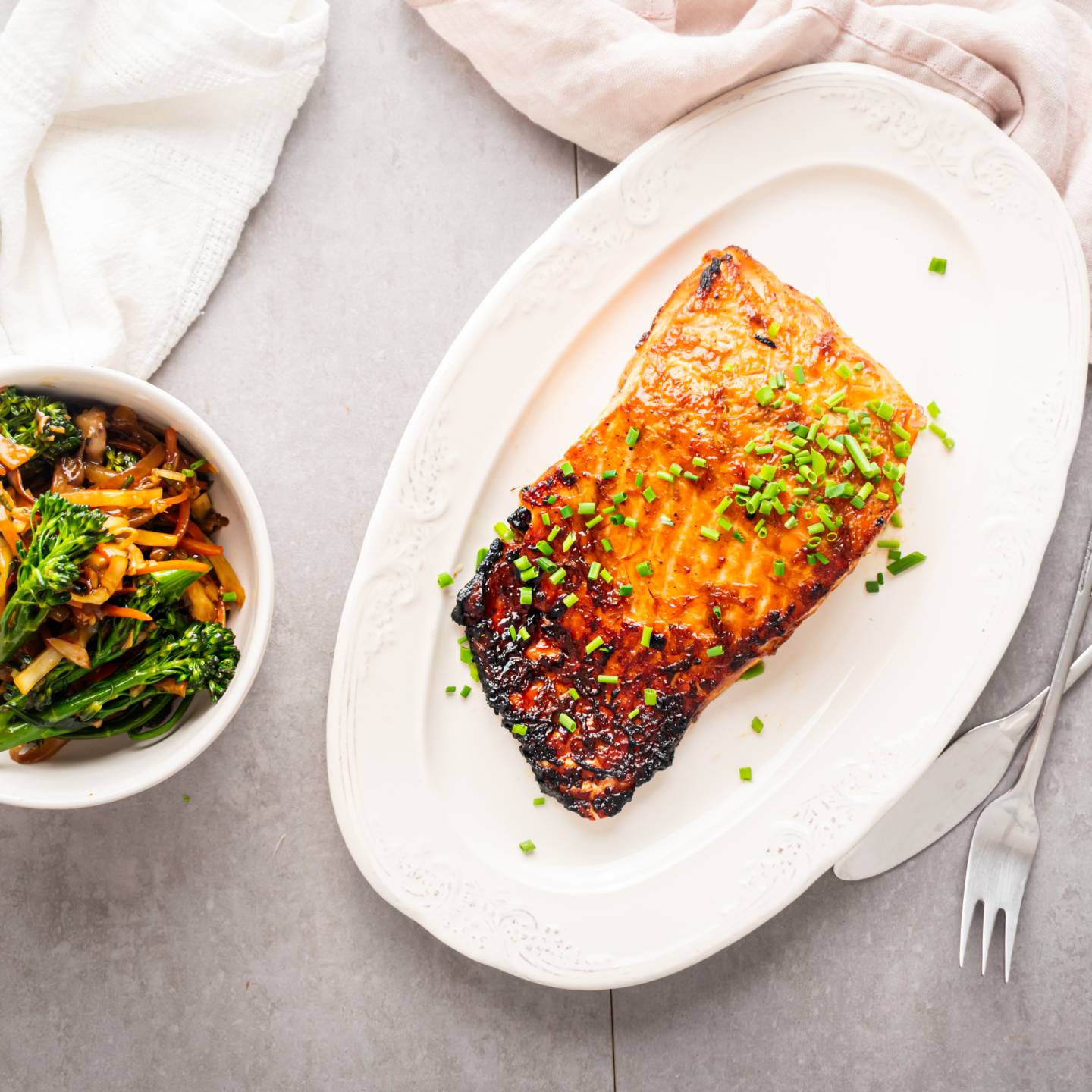
One Pan Roasted Salmon, Sweet Potatoes, and Asparagus
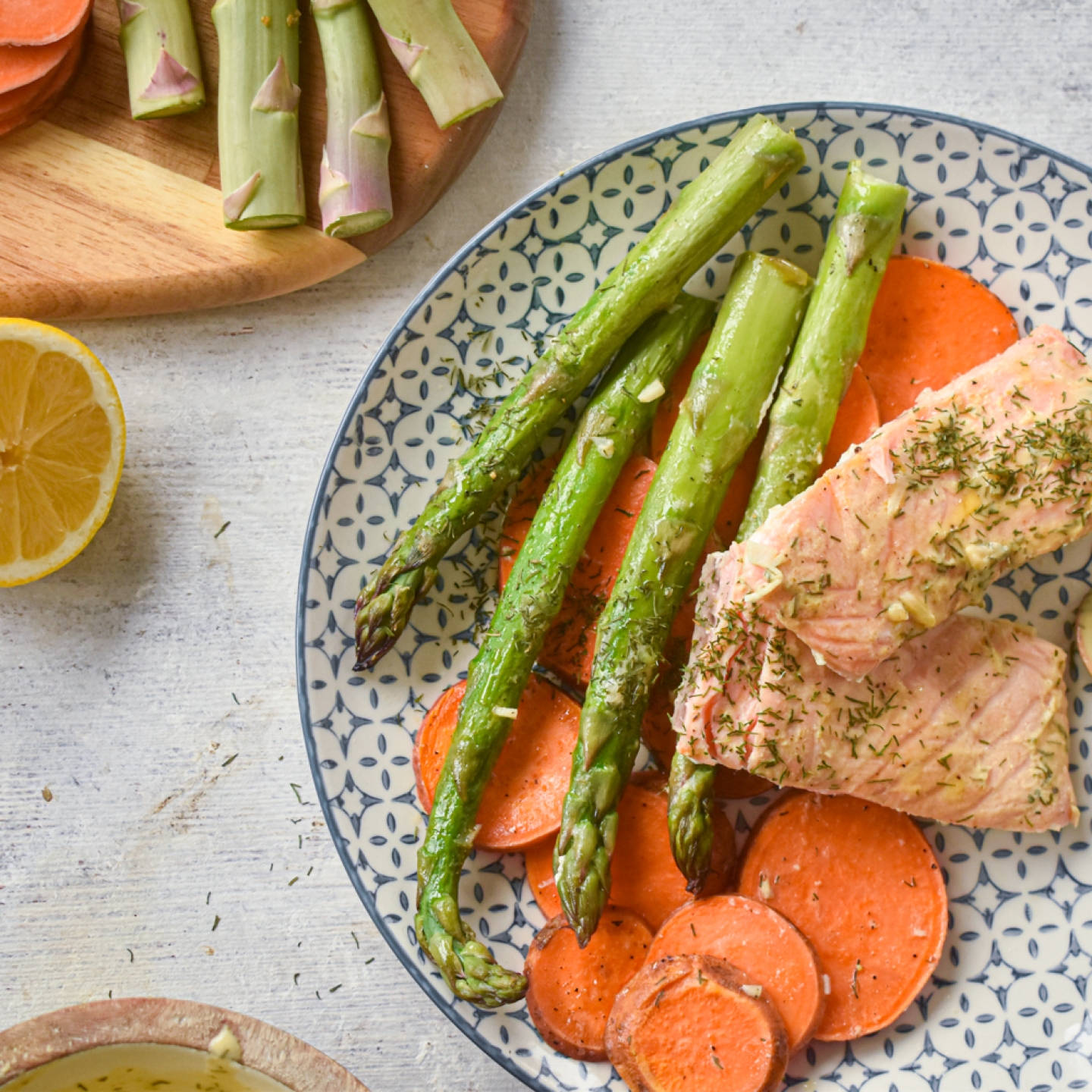
Mustard and Maple Glazed Salmon
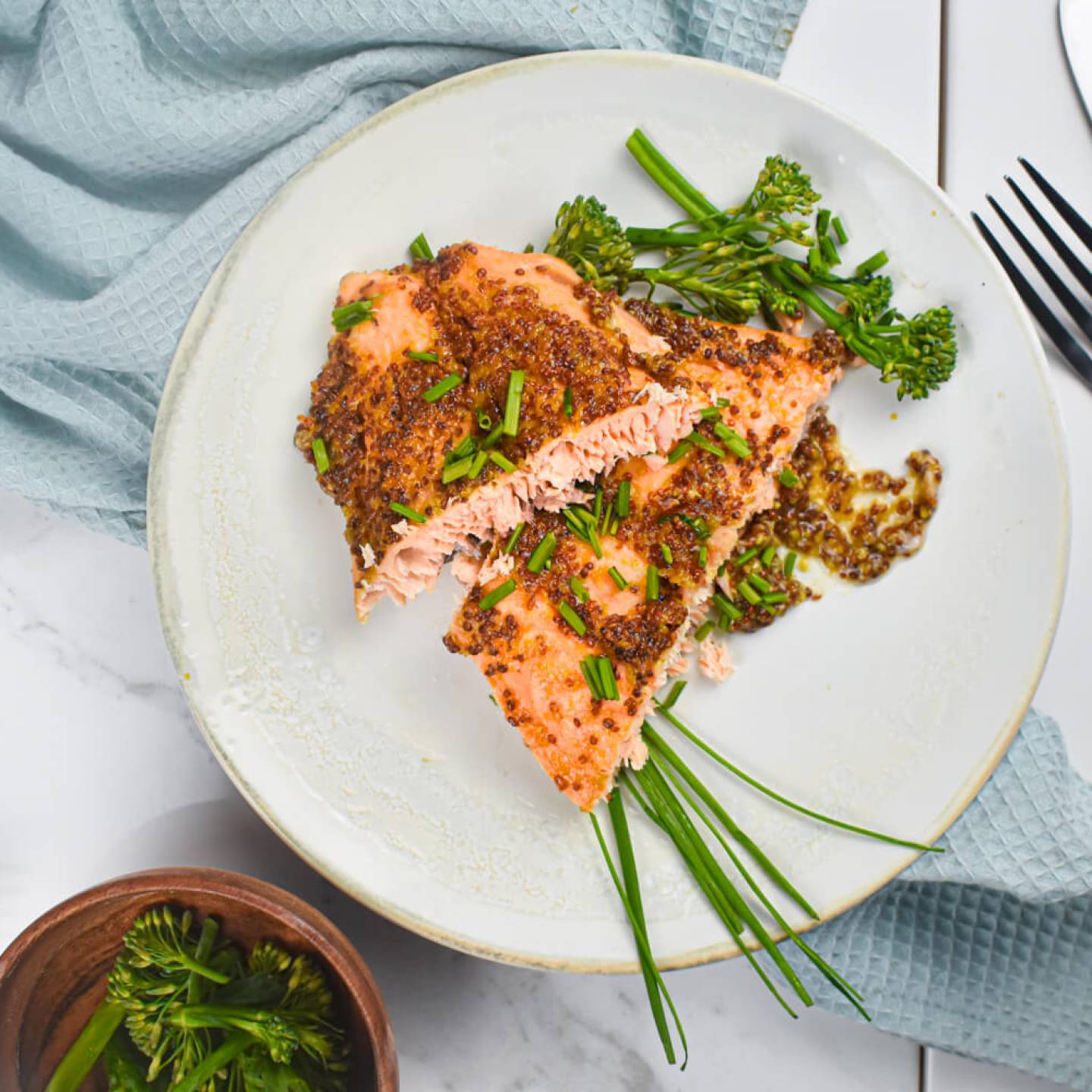
Baked Garlic Lemon Salmon in Foil
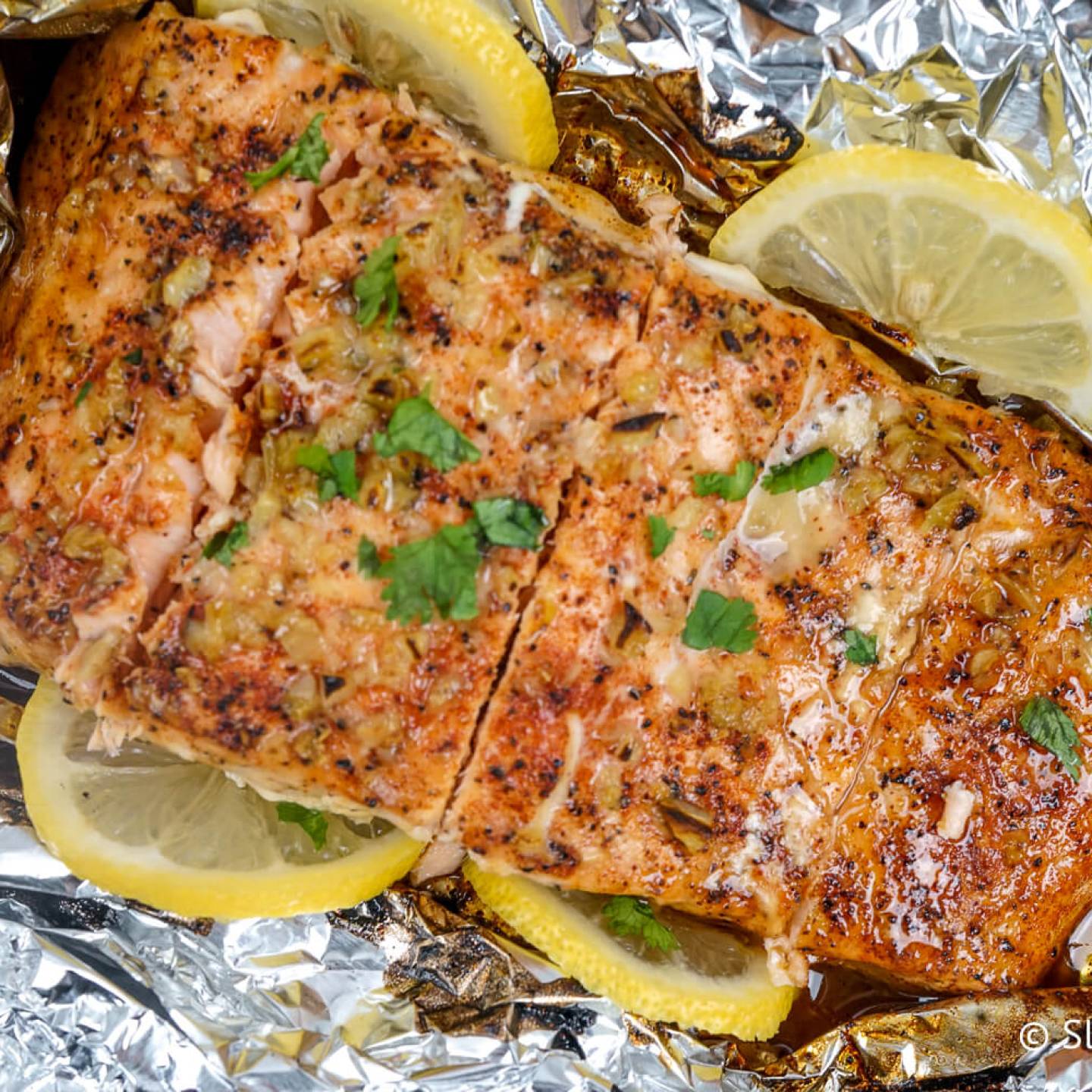
One Pan Roasted Salmon, Sweet Potatoes, and Asparagus

Cajun Salmon
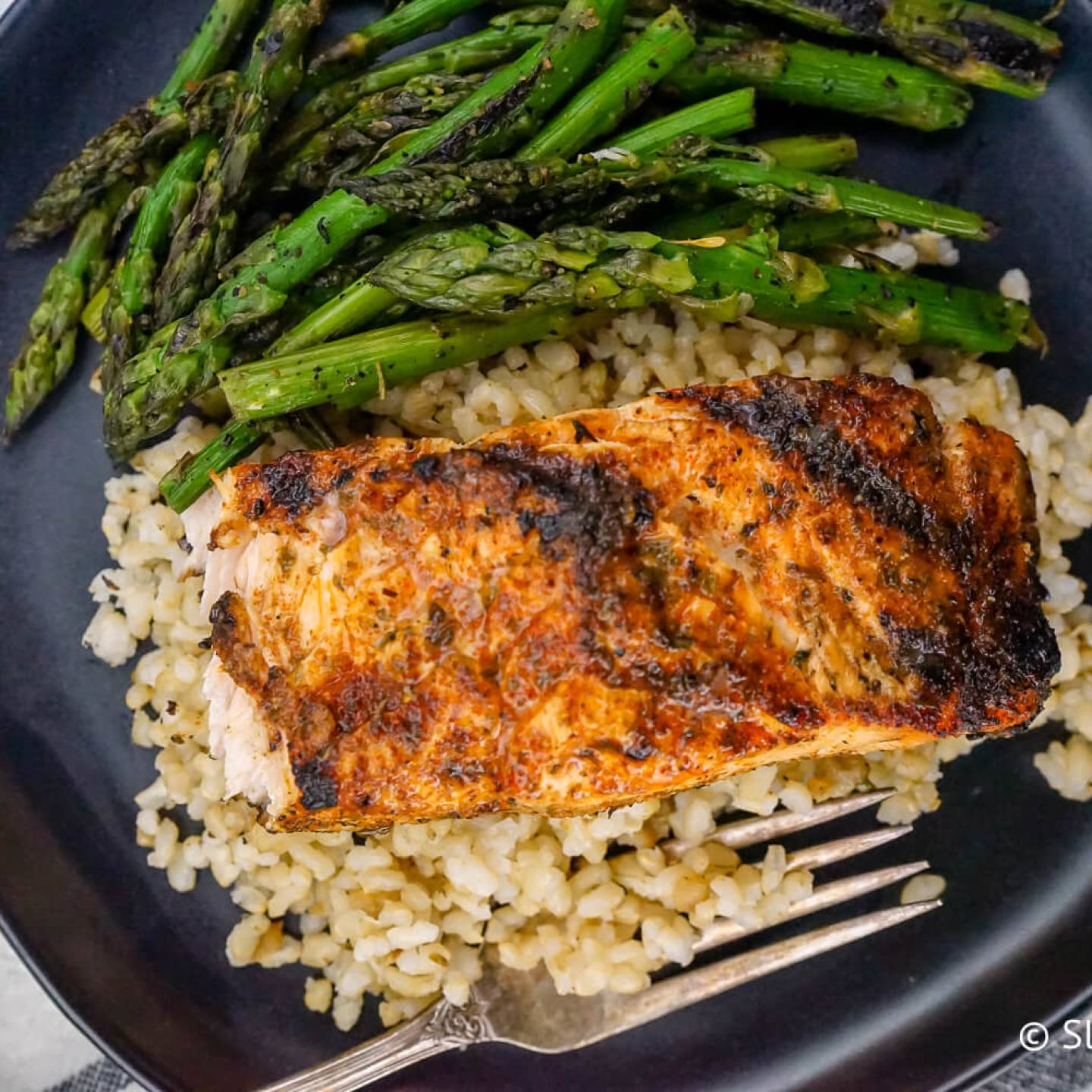
Coconut Crusted Salmon
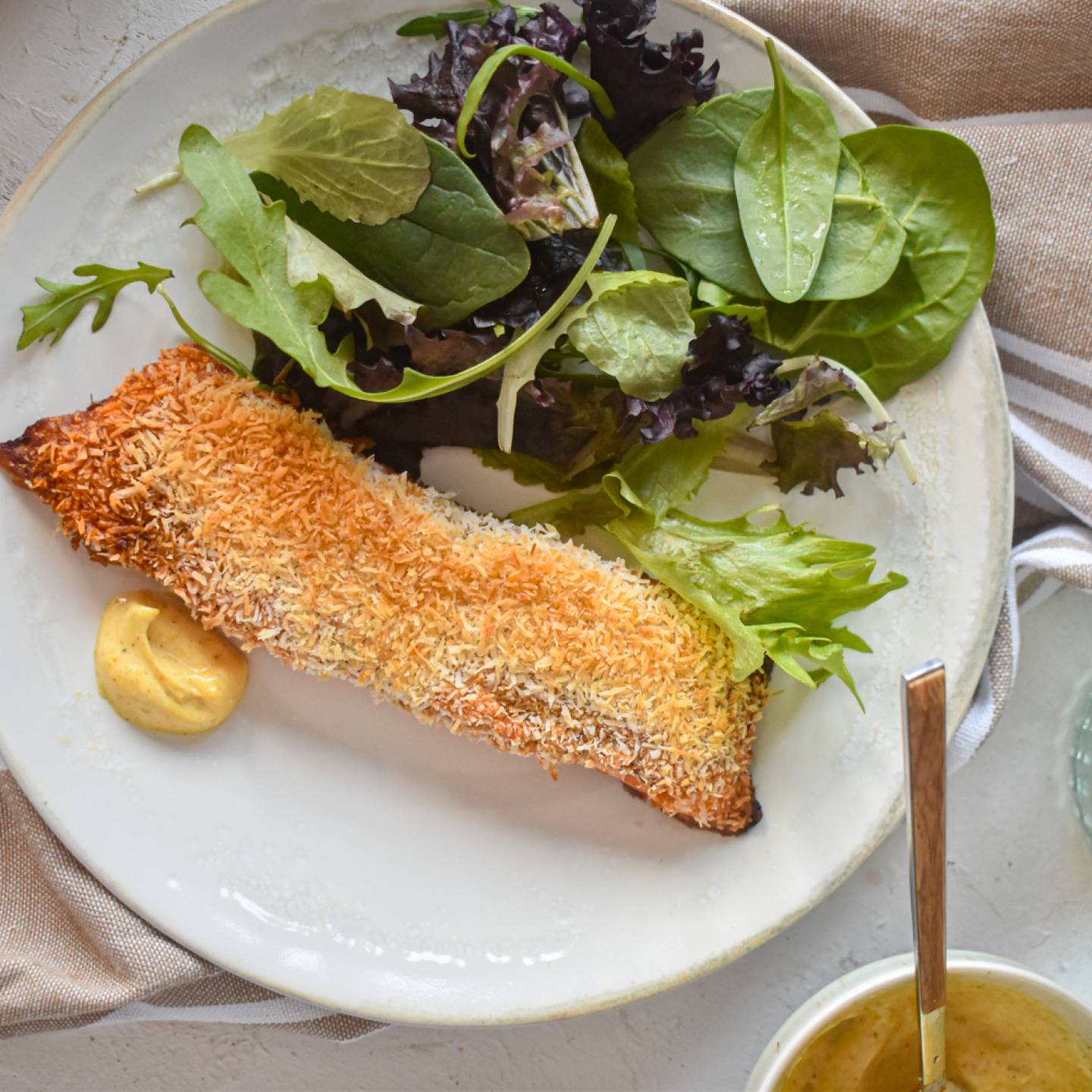
Globally Inspired Salmon Ideas
Salmon is one of those ingredients that soak up flavor and can pair with almost any type of cuisine. It is delicious in Mexican recipes, Asian-inspired dishes, and more. Here are some of our favorite ways to use salmon with flavors from around the globe.
Make this healthy and delicious Salmon Stir Fry in less than 20 minutes! Packed with tender chunks of salmon, lots of fresh vegetables, and the most amazing homemade teriyaki inspired stir-fry sauce. Get ready to take your classic fish tacos to the next level with these mouth-watering Salmon Tacos! Made with blackened salmon and a flavorful corn salsa packed into warm tortillas, this easy healthy recipe makes the perfect addition to taco night. Salmon Sushi Bowls are a quick, easy, and healthy recipe perfect for any night of the week! Bake the salmon in a teriyaki-style marinade, then serve it with fluffy sushi rice, crunchy vegetables, buttery avocado, savory nori, and a creamy Sriracha mayo. Salmon Tostadas are made with flaky salmon, bright pineapple salsa, and creamy avocado, all stacked on top of a perfectly crispy tostada shell. Serve alongside some rice and beans for the ultimate weeknight dinner! This easy Teriyaki Salmon is baked in the oven with a homemade teriyaki sauce and marinade. It comes out perfectly flaky with the most amazing crispy outside. These Crispy Asian Salmon Bowls are a quick, flavor-packed meal featuring honey-soy glazed salmon bites, fresh veggies, fluffy rice, and a drizzle of spicy mayo. It’s a restaurant-quality dish that comes together in 30 minutes and is perfect for meal prep! Blackened Salmon Tostadas with Mango Corn Salsa are a healthy dinner that comes together in under 20 minutes with under 350 calories.
Italian Salmon with Tomato Basil Salsa is crusted with a homemade spice rub, broiled until cooked perfectly, and then covered in tomatoes, fresh basil, and balsamic vinegar for a restaurant-worthy salmon dish that's ready in fifteen minutes.
Easy Salmon Stir Fry
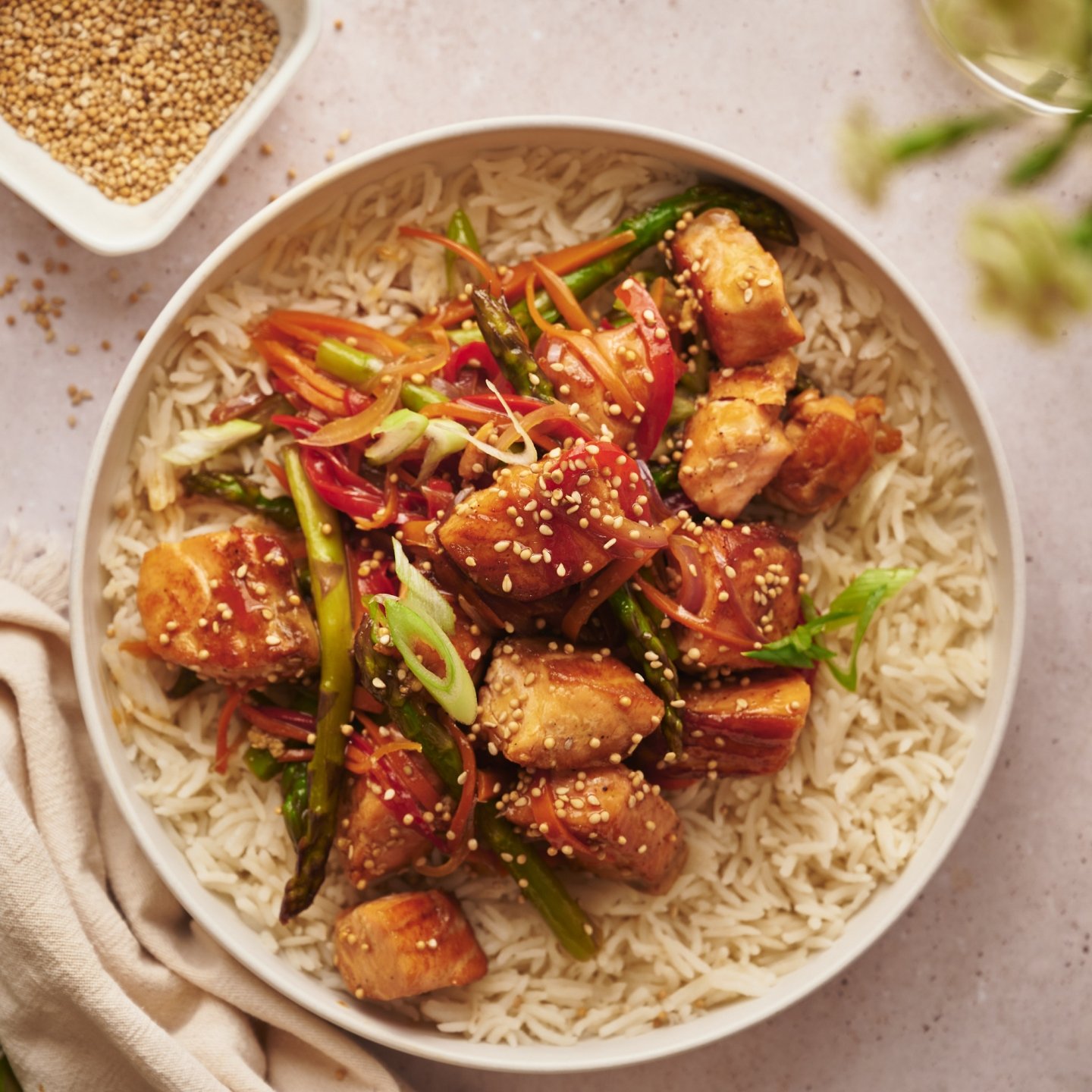
Salmon Tacos with Corn Salsa
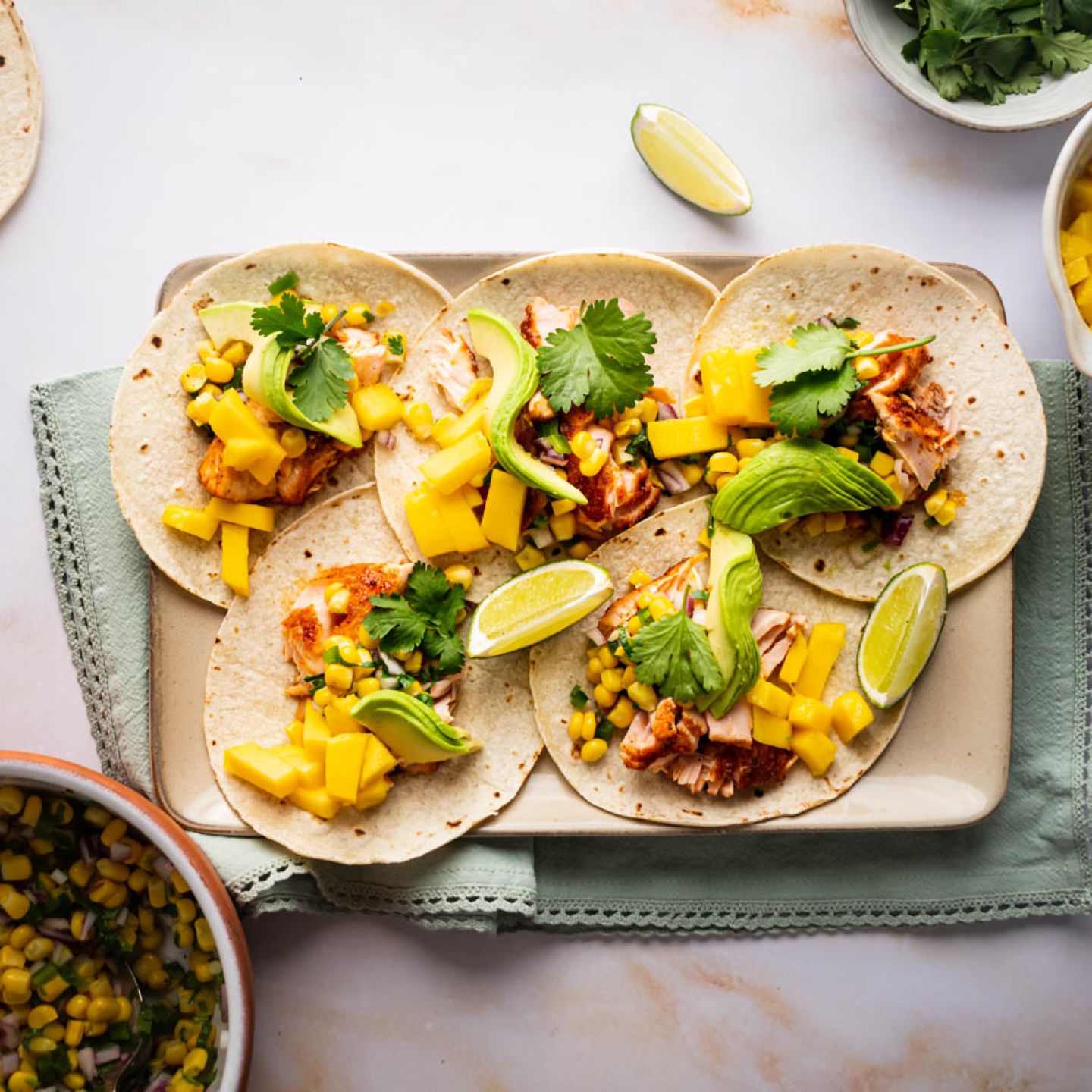
Salmon Sushi Bowls
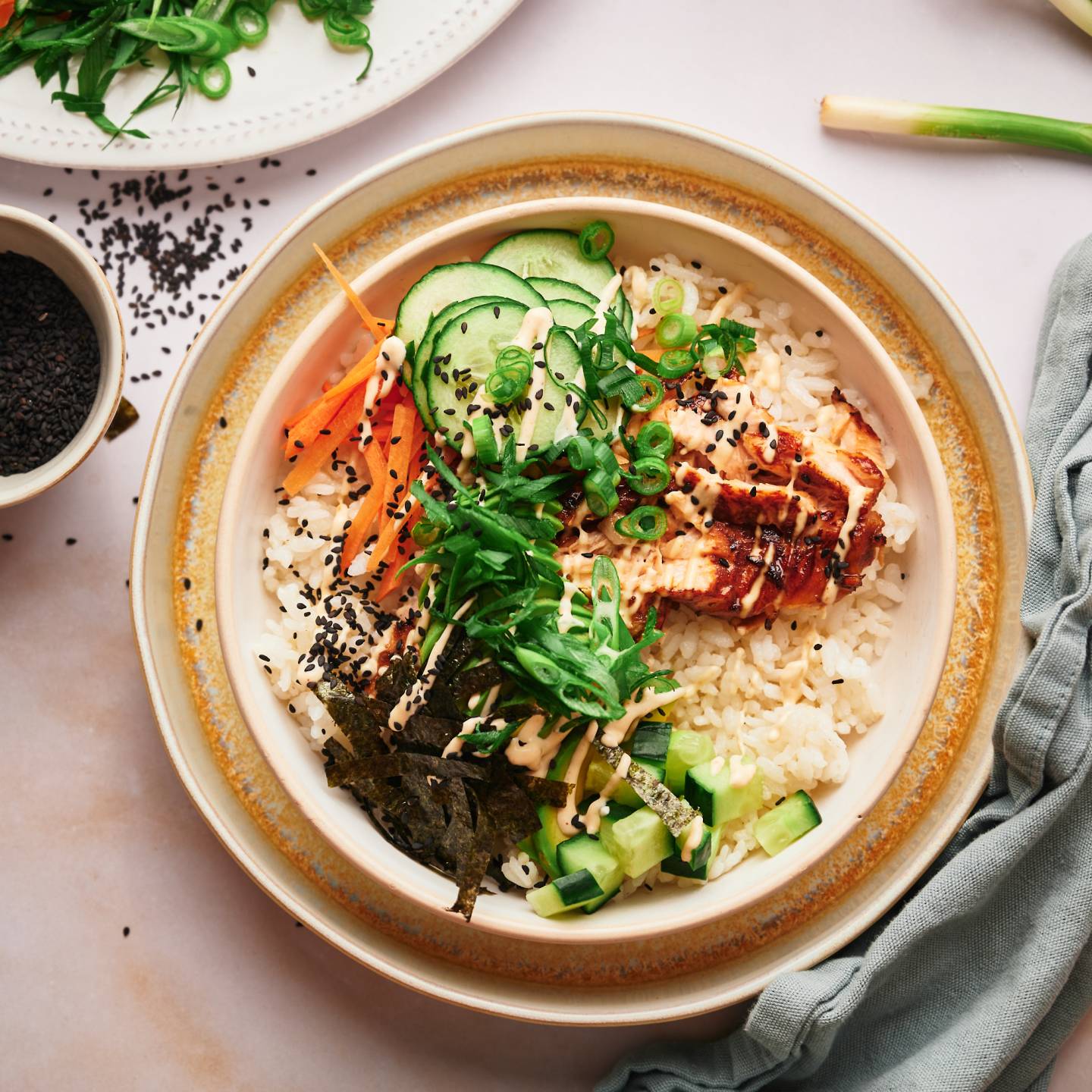
Salmon Tostadas
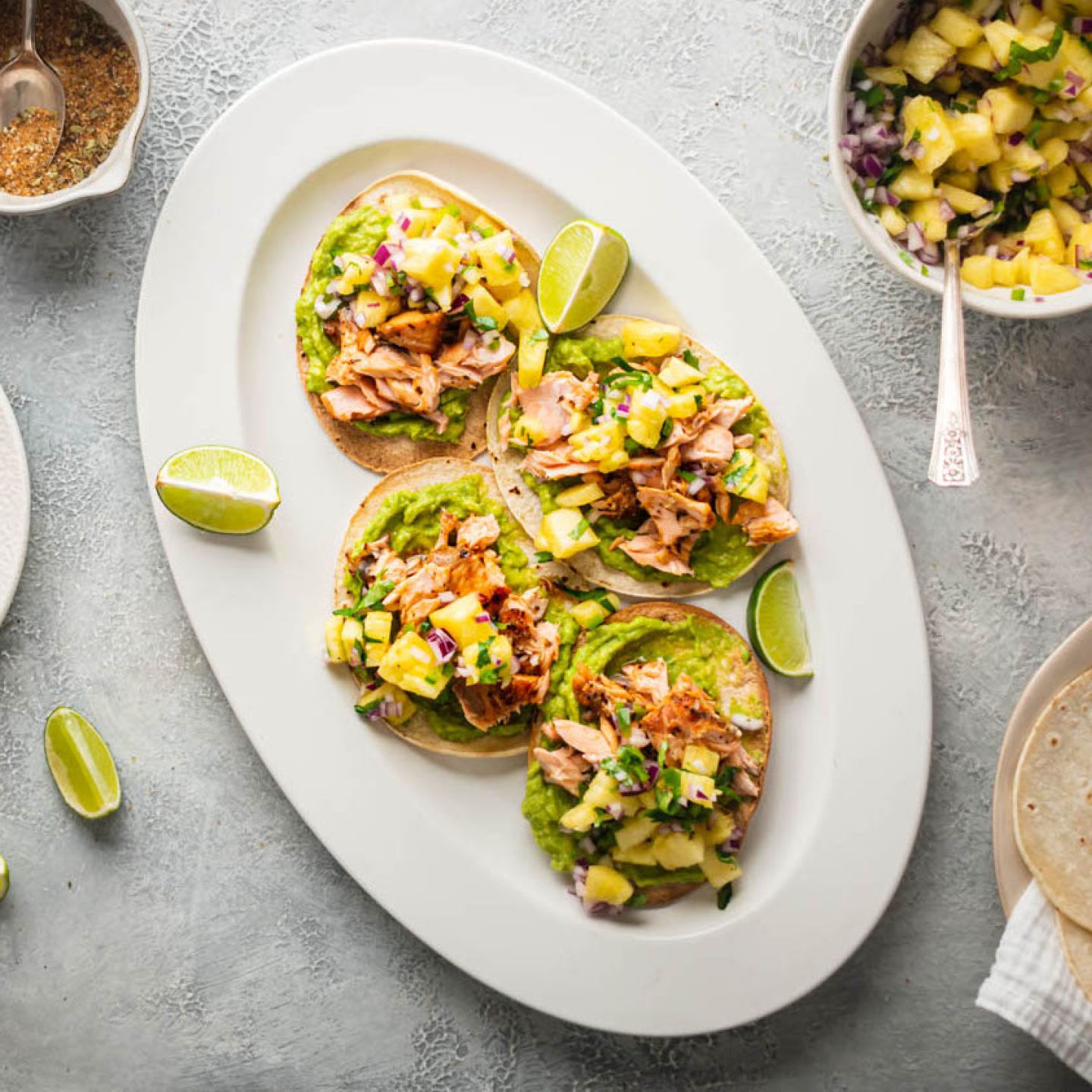
Teriyaki Salmon
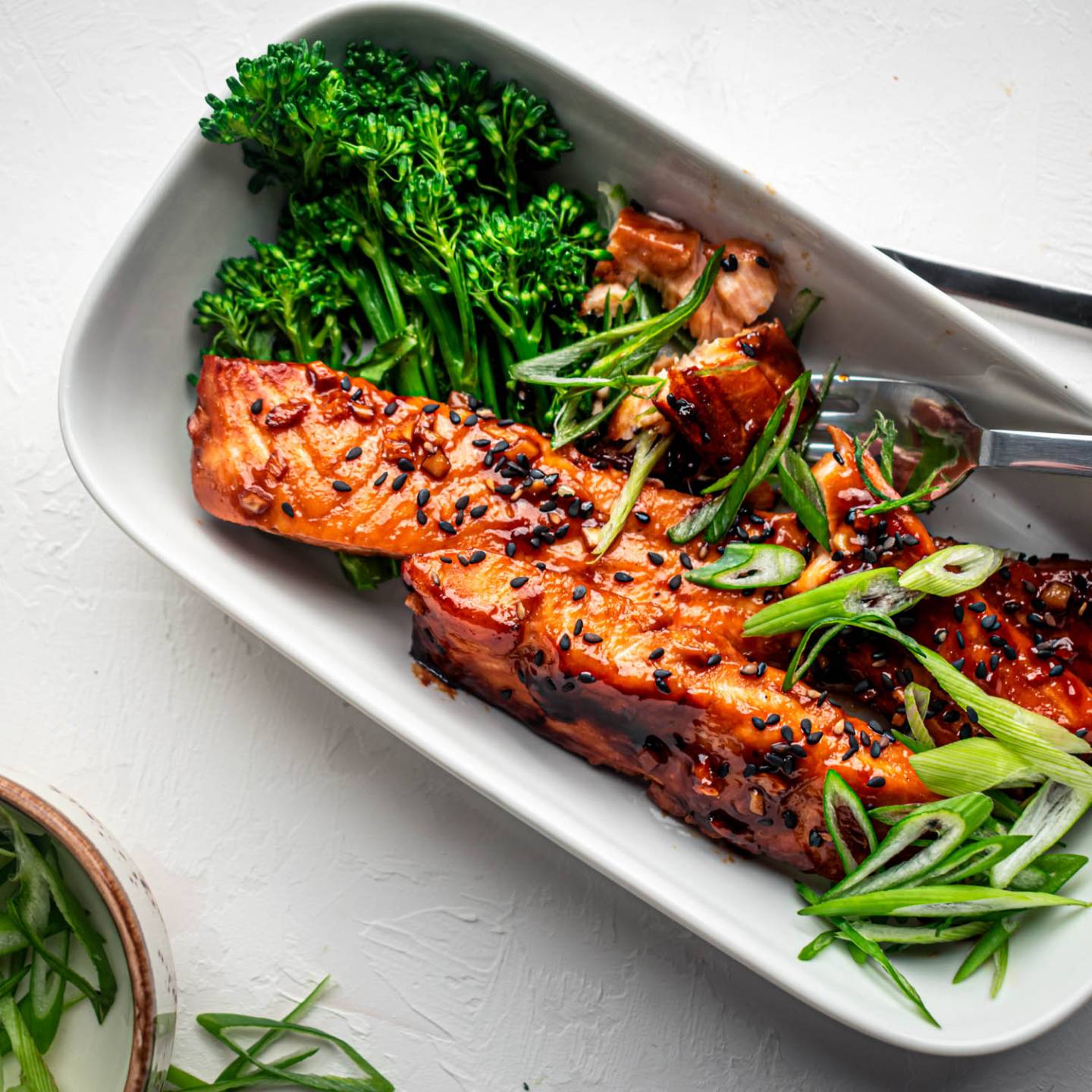
Crispy Asian Salmon Bowls
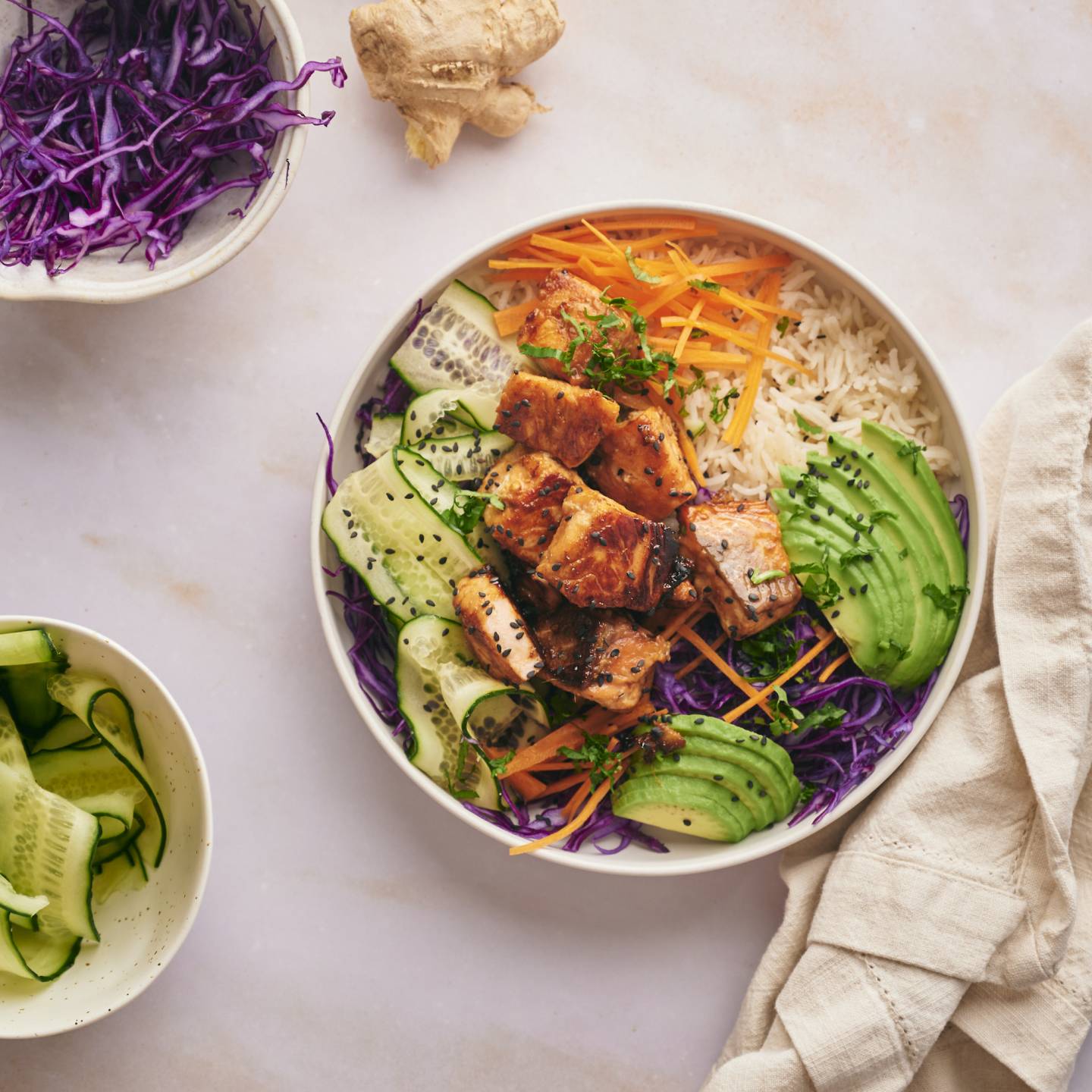
Blackened Salmon Tostadas
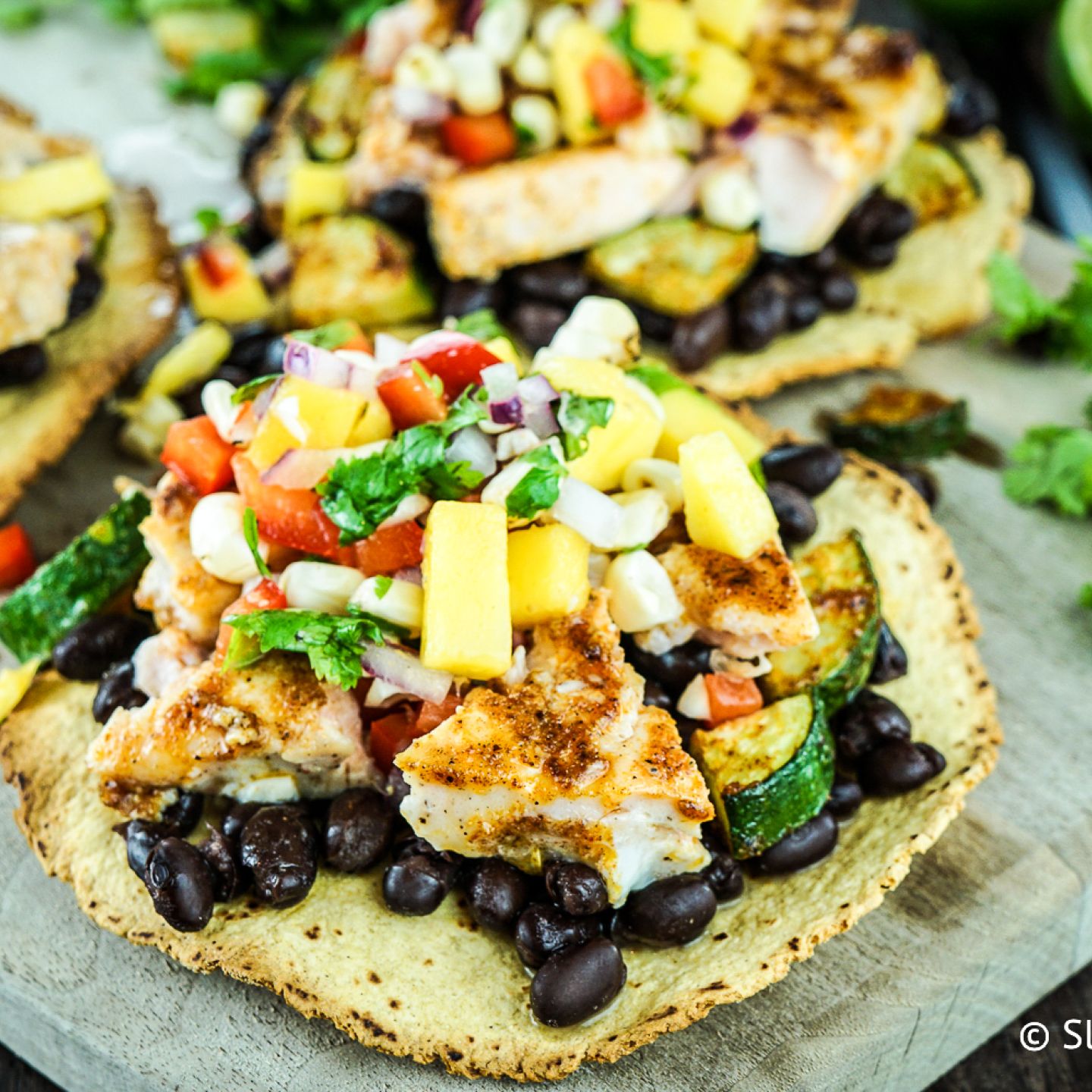
Italian Salmon with Tomato Basil Salsa
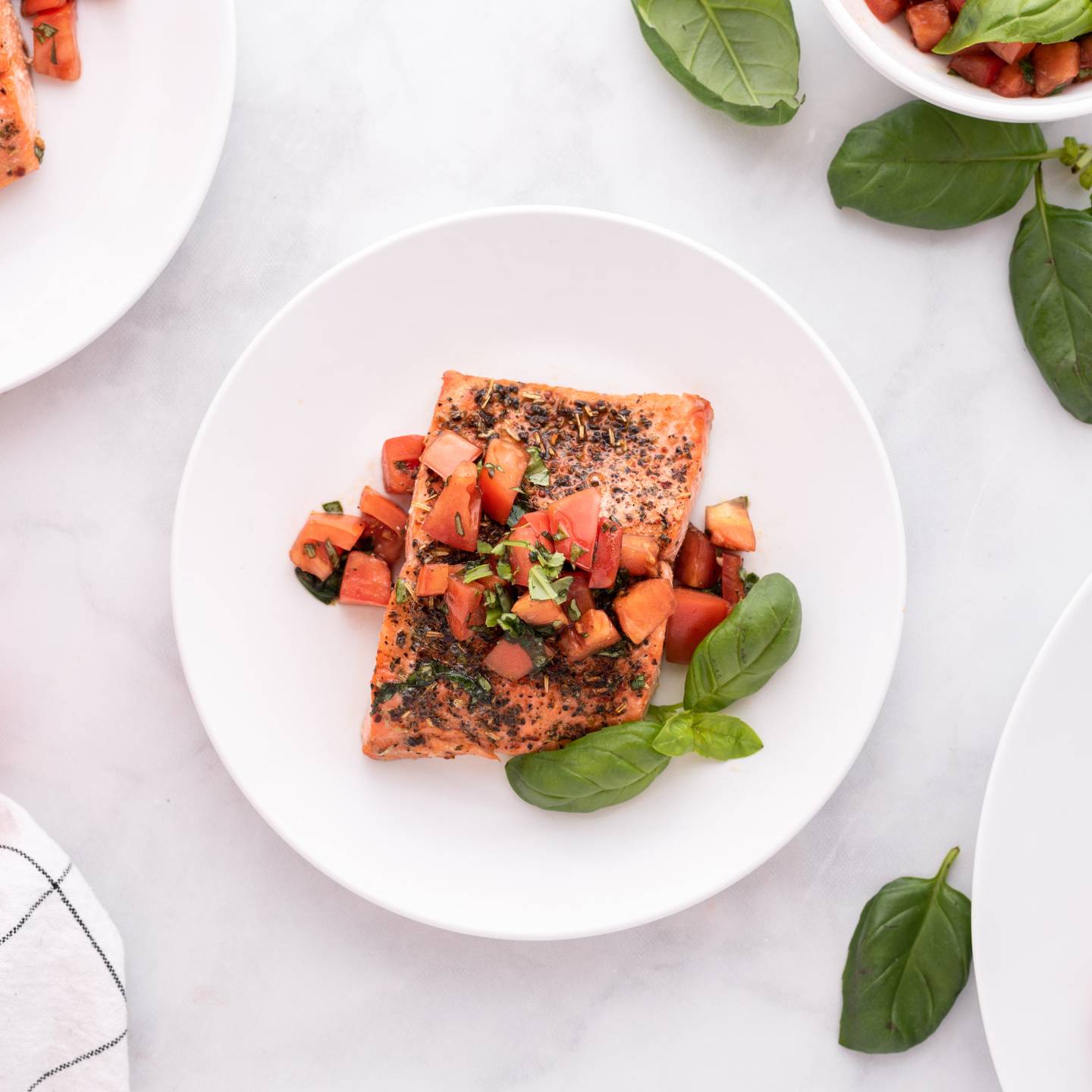
Salmon Burgers, Salads, and More
There are so many delicious ways to use salmon to make burgers, salmon cakes, salads, and more. Check out the recipes below and get creative with fresh or canned salmon!
These quick and easy Salmon Burgers are a great, healthier alternative to traditional beef burgers. Made with Greek yogurt, lemon juice, green onions, and fresh parsley, these tasty fish burgers are perfect for pairing with your favorite BBQ side dishes. These golden brown Salmon Patties can be made with canned or fresh salmon. Packed with fresh vegetables and herbs, these tasty salmon cakes work for an easy dinner, tasty appetizer, or even burger. These tasty Salmon burgers with fresh dill make the best appetizer, sandwich, or main course. Grab all your favorite burger fixings for an easy weeknight meal. This Salmon Kale Salad with sweet potatoes, avocado, and an easy balsamic dressing makes the perfect easy lunch or dinner. Blackened Salmon with Garlic Zucchini Noodles is a tasty low carb, Paleo, and Whole30 friendly meal that's ready in under 30 minutes. This Sweet and Spicy Salmon is coated in a delicious homemade spice rub and then can be pan seared or cooked on the grill. Ready in less than 10 minutes.
Easy Salmon Burgers
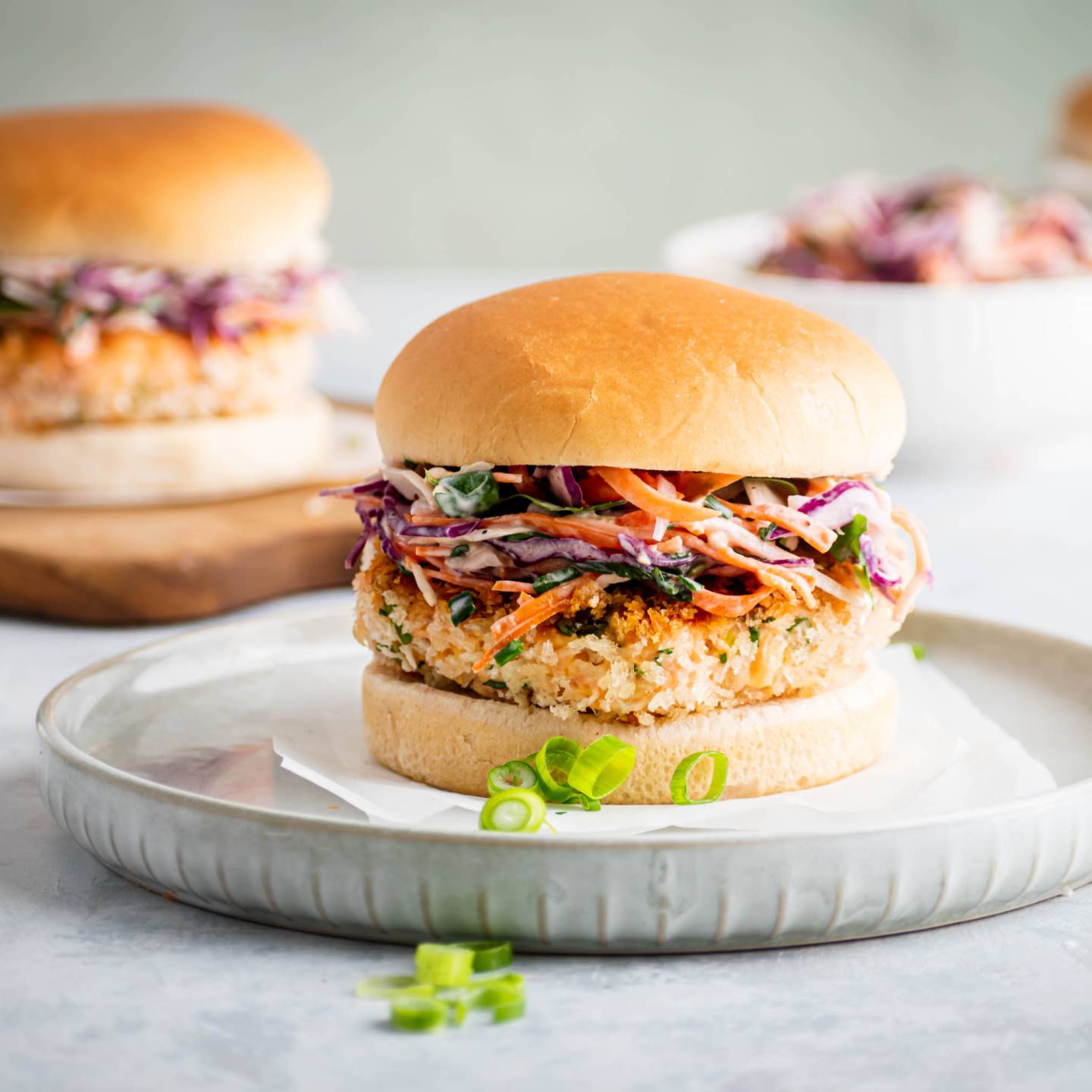
Salmon Patties
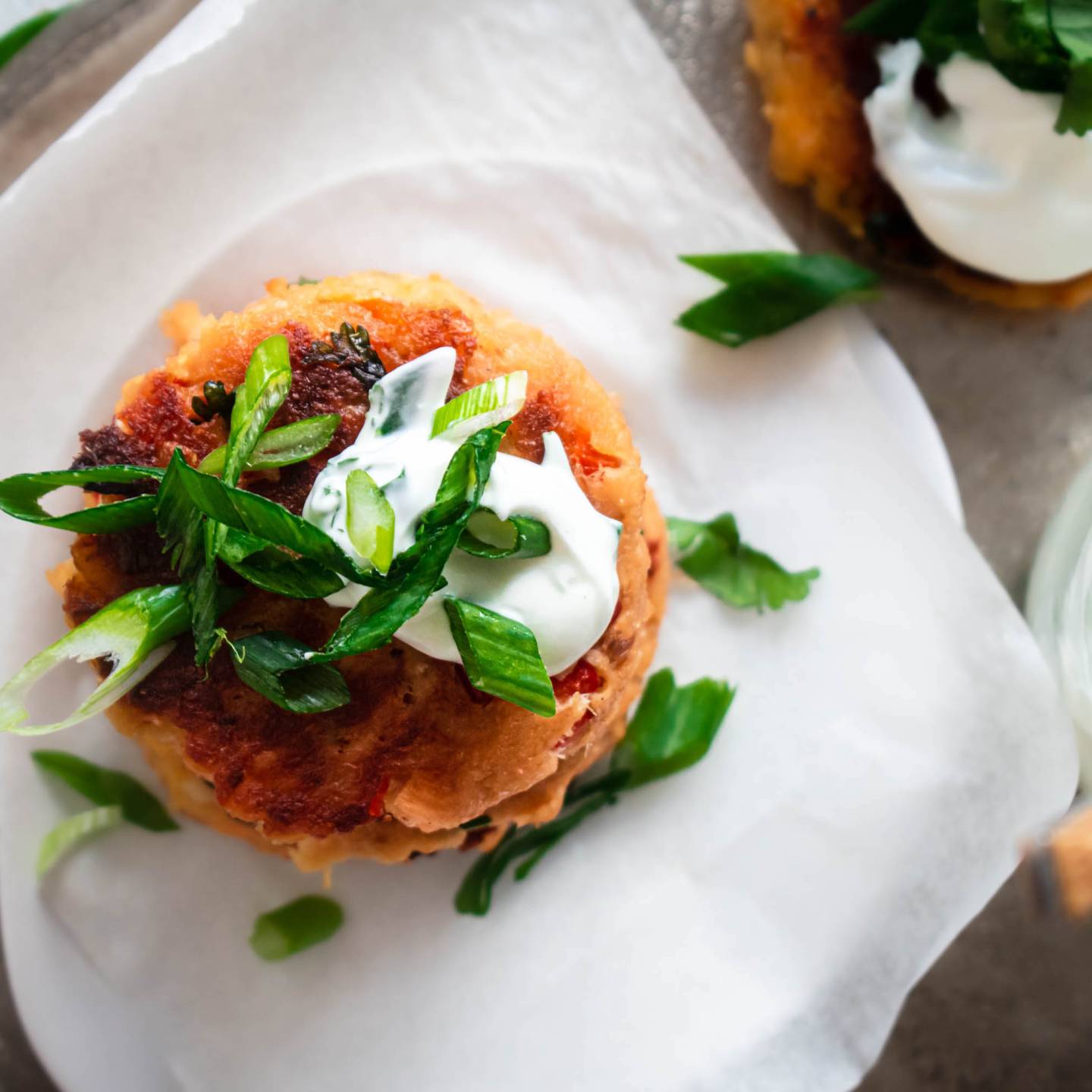
Dill Salmon Burgers
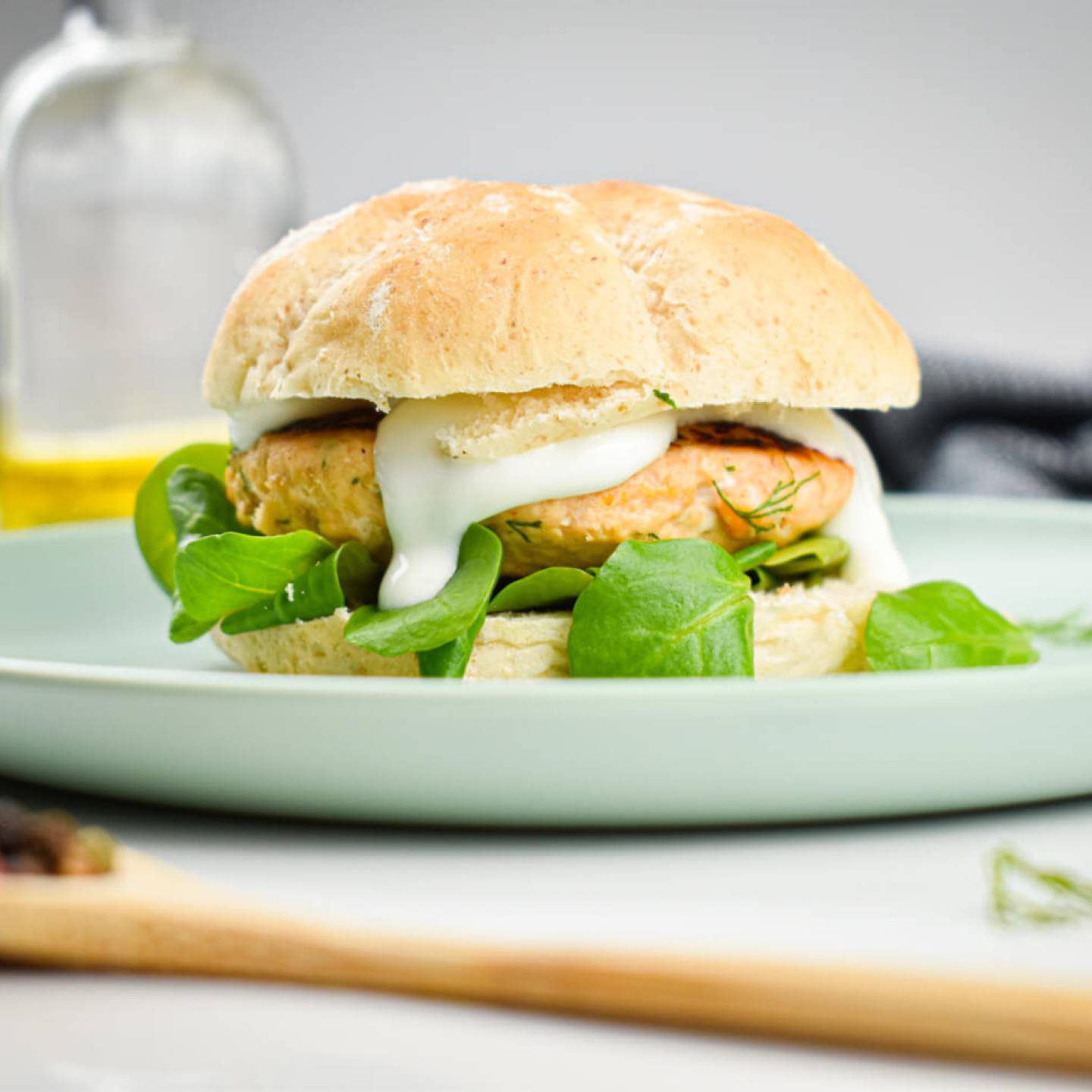
Salmon Kale Salad with Sweet Potatoes
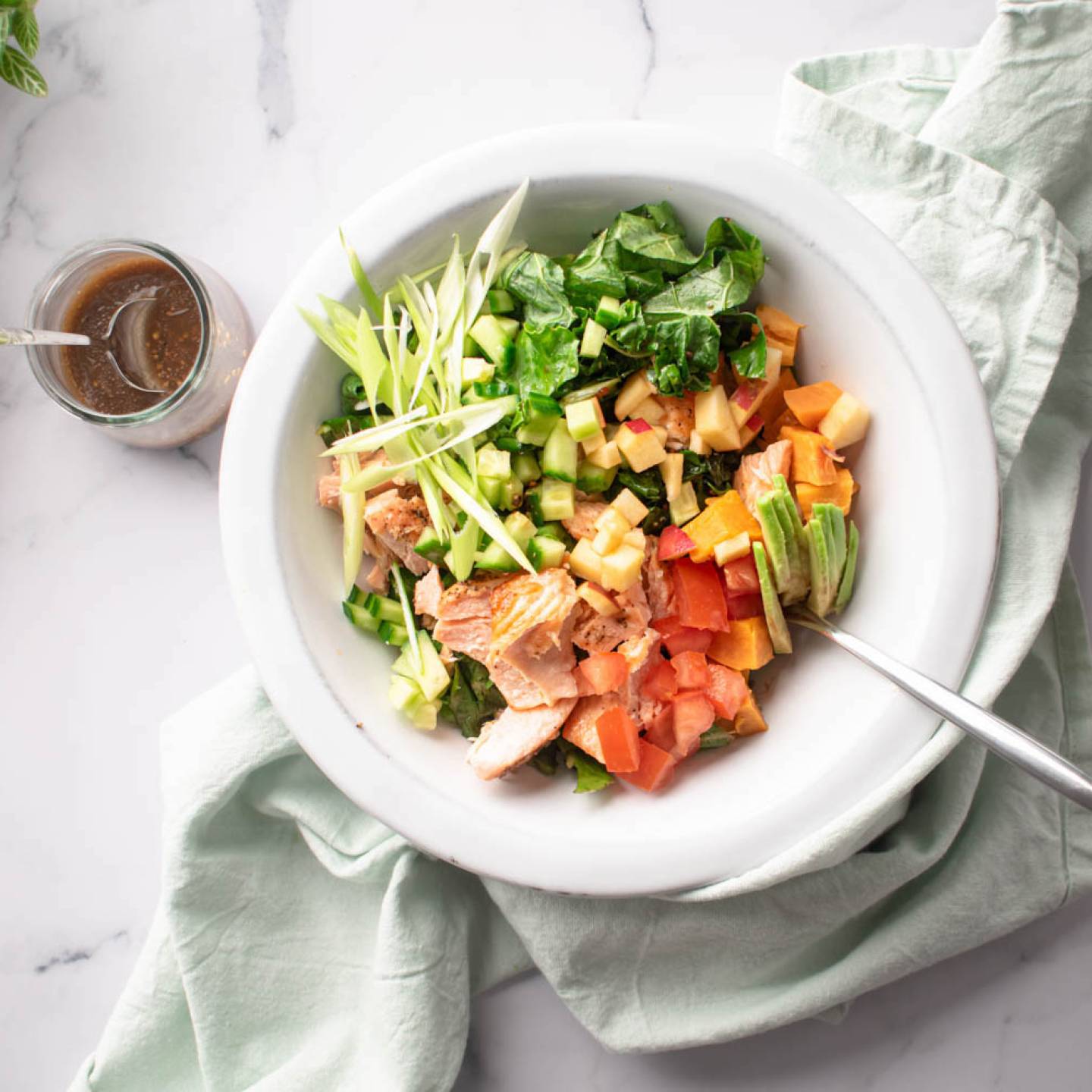
Blackened Salmon with Garlic Zucchini Noodles
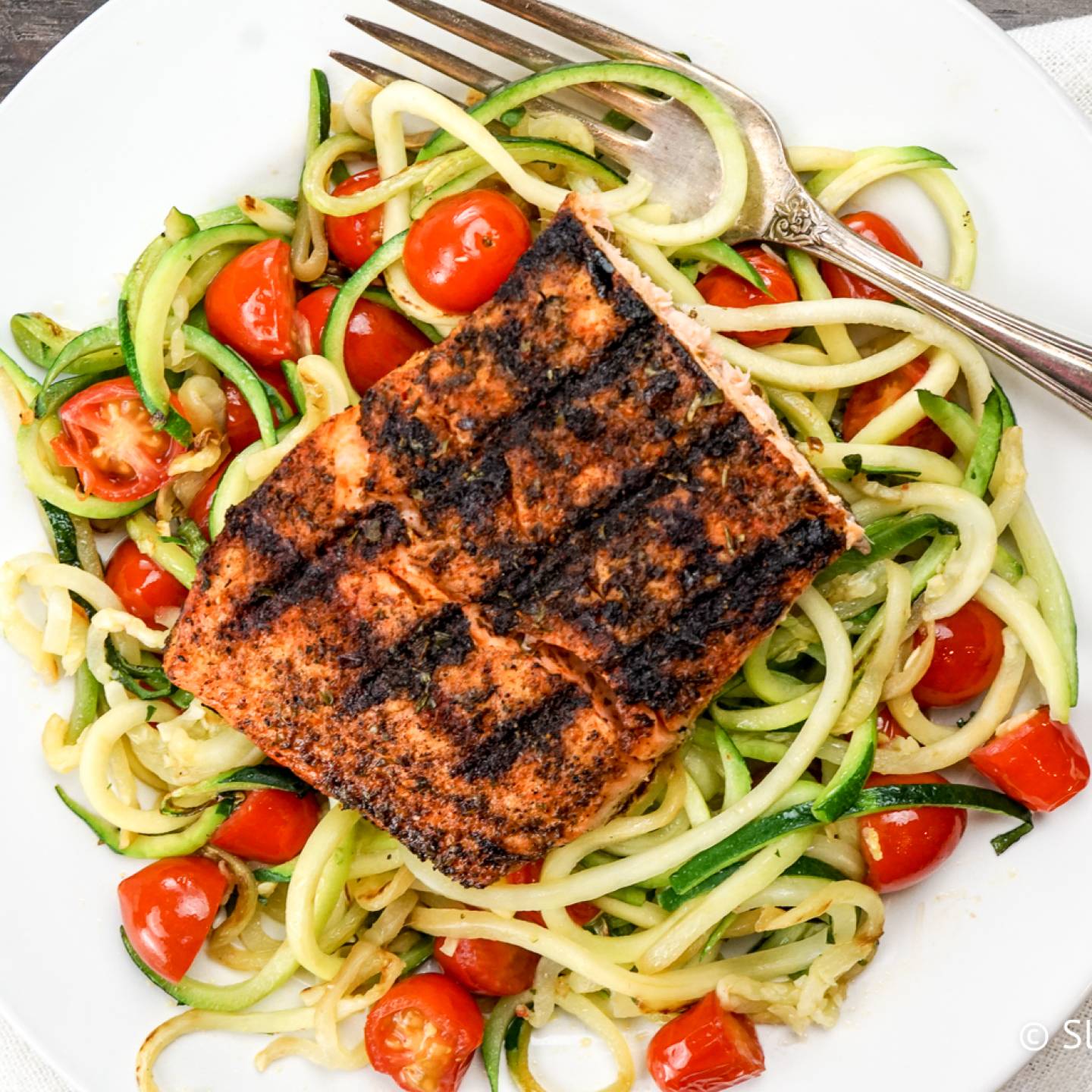
Sweet and Spicy Salmon
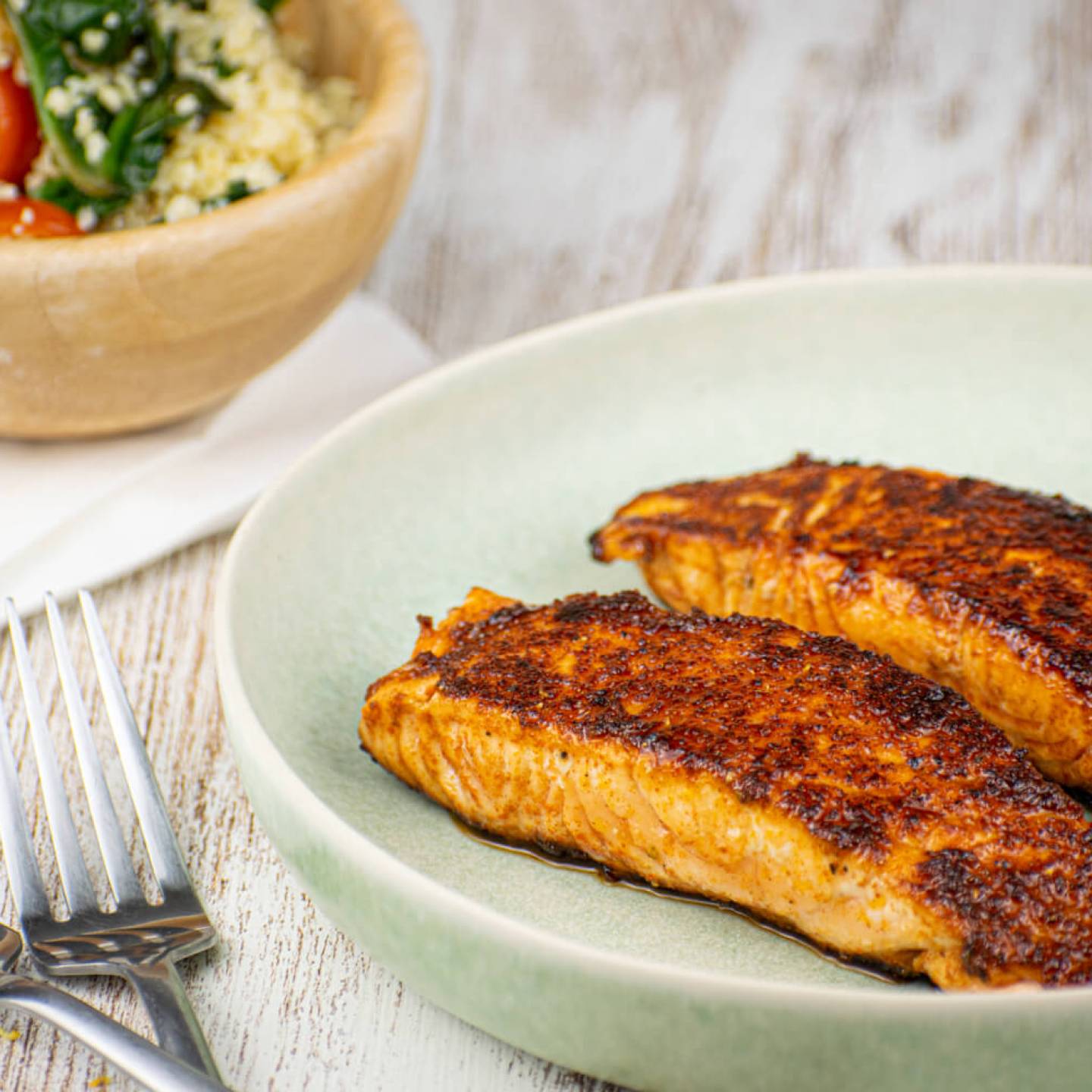
10 More Things to Do With Salmon
Salmon is super versatile and there are so many delicious and easy ways to serve it! Here are 10 more ideas we love for cooking with salmon. These ideas are great for a freshly cooked meal or repurposing salmon leftovers.
- Make pasta: Salmon works great with pasta and can be used instead of shrimp or chicken in most pasta recipes. It pairs really nicely with lemon butter or a light cream sauce. Our favorite is combining salmon, asparagus, sundried tomatoes, and pasta all in a light garlic lemon cream sauce.
- Make a sandwich or wrap: There are so many great ways to serve salmon in a sandwich. Make a salmon BLT with bacon, lettuce, and tomato. Add fresh or smoked salmon to a wrap with cream cheese, greens, and fresh vegetables. Or break the salmon into pieces and make a salmon salad with mayonnaise, yogurt, chopped celery, and spices. It's just like chicken or tuna salad, but with salmon. Don't forget bagels and lox. Smoked salmon, cream cheese, red onion, capers, and a toasted bagel is a classic for a reason.
- Eat it raw: If you are lucky enough to find some sushi-grade salmon, it is delicious raw. Slice it into thin pieces for sashimi. Add sesame oil and soy sauce to make a salmon poke bowl. Turn into delicious sushi, sushi bowls, and hand rolls.
- Serve it with eggs: Both fresh and smoked salmon pair so well with eggs. Add it to a scramble with fresh dill and a touch of creme fraiche. Bake it into a quiche with spring vegetables. Make a breakfast sandwich with smoked salmon. Or simply serve it in place of traditional breakfast meat like bacon or sausage.

- Make a dip or spread: Canned, fresh, and smoked salmon can all easily be turned into a delicious dip or spread. Salmon dip is a simple combination of smoked salmon, cream cheese, sour cream, lemon, dill, and capers. Or get more creative and make a fresh salmon salsa with mango, cilantro, red onion, jalapeno, and lots of lime juice. Almost like a salmon ceviche.
- Make soup: Traditionally when salmon is used in soups, it is made into a salmon chowder with potatoes, corn, and a rich creamy broth. But salmon also works great in Asian soups like ramen, curry, and egg drop soup.
- Rice and grain bowls: Every time I have leftover salmon in the fridge, it is turned into some kind of meal prep grain bowl. Get inspired by Mexican, Asian, or Mediterranean flavors and build a salmon grain bowl with rice or quinoa, lots of fresh veggies, and cooked salmon. Add salsa, sauce, or dressing to bring everything together.

- Grill it: With its meaty texture and higher fat content, salmon is a great fish for the grill. It doesn't fall apart and cooks in about 10 minutes. Just add olive oil and your seasoning of choice. Cook the whole salmon slab or break it into filets. Salmon is also great for kabobs, burgers, and foil packets.
- Make tacos and tostadas: Although salmon isn't commonly used in Mexican cuisine, it is so good in tacos, tostadas, and burrito bowls. Swap it in for white fish or shrimp in almost any Mexican recipe for a delicious twist on a classic.
- Appetizers and starters: Don't overlook salmon when putting together appetizers, charcuterie boards, and starters. It makes a tasty appetizer served on sliced cucumbers with cream cheese. Add it to a veggie platter or cheese board. Make salmon and tomato bites drizzled with pesto. The options are endless.
Cooking Guide for Salmon: Temperatures and Time
There are so many different ways to cook salmon, it can be hard to know what temperature to cook the salmon and for how long. After multiple tests in our own kitchen, here is our ultimate guide for cooking salmon.
Make sure to follow directions for the type of salmon you are using. Wild salmon is much leaner and thinner than farm-raised salmon. It cooks more quickly and tends to dry out faster.
One more note, the FDA recommends that salmon is cooked at its thickest part of 145 degrees. This will produce a well-done, fully-cooked piece of salmon.
Many people prefer their salmon cooked medium to medium well, where the fish is flaky on the edges but still has some softness and silkiness inside. If this is your preferred texture, cook farm-raised salmon to 135 degrees and wild salmon to 130 degrees. It will rise slightly in temperature as it rests.
Baking and Roasting Salmon
Preheat the oven to 425 degrees and make sure to coat the baking sheet or dish with cooking spray. Place the salmon fillets on the baking sheet, skin side down.
Make sure the fish is lightly coated with oil and seasoned well with salt, pepper, and /or spices.
The average salmon fillet is about 1-inch thick and will take about 10 minutes to cook so it is opaque and flakes nicely with a fork. Thinner pieces, around 1/2-inch thick, will take closer to 5 minutes. Thick pieces, closer to 1.5-inches thick will take 15 minutes.
Let the salmon rest for 5 minutes before serving.
Pan Searing Salmon
This method is the most hands-on but results in a super crispy exterior and nicely crispy skin.
Start by heating a heavy skillet over medium-high heat. Drizzle enough olive oil in the pan to lightly coat the bottom of the pan. You can also use butter.
Add the seasoned fish to the skillet, skin-side up. Cook for 5 minutes until the outside is nicely browned and a nice crust has formed.
Gently skip the fish over and cook for 3-4 minutes until the salmon is cooked to your liking. Let the fish rest before serving.

Cooking Salmon in Foil
Salmon is often cooked en papillote, or in a foil or parchment paper packet. This allows the salmon to gently steam with vegetables, lemon, or sauces and marinades.
Start by preheating the oven to 400 degrees. Lay out the foil or parchment paper. Start by layering in the vegetables. Make sure to season them well. Add the salmon, seasoning as you go. Then add lemon or herbs on top. Drizzle with olive oil or butter.
Fold the packets around the fish, leaving some room above the fish for it to steam.
Bake for 12-15 minutes, depending on the vegetables you are using, Makes sure to choose quick-cooking vegetables or slice them very thin so they can cook in a short amount of time.
Carefully open the packets when they come out of the oven. Let the salmon rest for a couple of minutes in the open packet before serving.
Grilling Salmon
Start by preheating the grill and making sure the grill grates are clean. Oil the if needed or if they tend to stick, consider cooking the salmon on a piece of foil.
Lightly coat the fish with oil on both sides and season as desired.
Place the salmon skin-side down on the grill. Cook for about 5 minutes or until the fish easily releases from the grill grates. Flip the fish over and cook for another 3-5 minutes.
Some people prefer not to flip their salmon when cooking on the grill. An average 1-inch thick salmon filet takes 8-12 minutes on the grill depending on how well done you like it.
Let the salmon rest for 5 minutes before serving.
Air Fryer Salmon
The air fryer is a great way to cook salmon. It comes out juicy and perfectly cooked with a nice crunchy exterior.
Start by preheating the air fryer to 400 degrees. Lightly brush the salmon with foil and add any seasoning or rub you like. If using a sauce or marinade, consider placing the salmon in an open foil packet for easy cleanup.
Cook the salmon for 7-11 minutes, depending on the thickness. Normally a 1-inch thick filet will take about 8 minutes in the air fryer. If the salmon isn't cooked enough, just place it back in the air fryer for 1-2 more minutes.
Let the salmon rest for a couple of minutes before serving.
Salmon Temperature Guide
The best way to know if salmon is cooked is with an instant-read thermometer. Since salmon can vary in thickness and size, this is the only foolproof way to know the salmon is cooked correctly.
- Rare: 120 degrees
- Medium Rare: 125-130 degrees
- Medium: 135-140 degrees
- Medium Well: 140-145 degrees
- Well Done: 145 degrees
Seasoning Ideas for Salmon

There are so many different ways to season salmon from simple salt and pepper to more bold spice blends. Here are a few options for salmon seasoning that will make any salmon taste amazing.
- Blackened or Cajun: Use a homemade blackening seasoning or a store bought option to make a smoky and spicy salmon.
- Lemon pepper: Make homemade lemon pepper by combining lemon zest with black pepper, salt, and garlic powder. A store-bought blend will also work, just look for one with natural flavors so it tastes like real lemon, instead of artificial lemon flavor.
- Brown sugar: Adding a touch of brown sugar to your favorite store-bought spice blend will help you create a crispy topping on the salmon since the sugar caramelizes.
- Asian: You can use store-bought or homemade Asian style marinades for salmon. One that always works is equal parts honey, soy sauce, and lemon or lime juice.
- Lemon herb: Use a store-bought herb blend that contains herbs like thyme, rosemary, oregano, marjoram, or parsley. Blend it with olive oil to smear on the fish and then squeeze lots of fresh lemon juice on top when it's finished cooking.
- Italian: Italian spice blends work great with salmon. For some spice add in red pepper flakes, which typically aren't included in these spice blends.
Frequently Asked Questions
Here are some more common questions about cooking salmon recipes and eating salmon.Is farm raised or wild caught salmon better for you?
Is wild or farm-raised salmon better for you? Well, that depends. Although farmed Atlantic salmon can provide more omega-3s than wild-caught, some studies have shown that factory-raised salmon contains more carcinogenic chemicals called PCBs. In some farms, the chemicals found have measured up to ten times higher than that of wild salmon. Then again, other studies have shown that levels of PCBs in farm-raised salmon are comparable to those found in wild-caught.
Another factor to take into consideration is mercury levels found in fish. When it comes to salmon, though, you don’t have to worry. Most farm-raised fish contains very little mercury and fish with the highest mercury levels include bigger, wild-caught fish like tuna, shark, king mackerel, and swordfish.
As far as the use of antibiotics or hormones to grow fish in farms, you don’t have to worry about that, either. United States regulatory groups prohibit their use. (This is not always the case in other countries, so be sure to check the label first before you purchase.)
All that said, the best course of action is to do a little research into where your salmon comes from. Some grocery chains, such as Whole Foods, have stricter guidelines for the factory-raised fish they buy and sell in their stores. Look for salmon (and other fish) sources that practice sustainable and responsible farming practices.
How to choose salmon?
If you’re buying fresh salmon, make sure it doesn’t smell fishy. Fresh salmon shouldn’t really have any smell at all. And, unless you’re at the store looking for smoked salmon specifically, you’ll want to steer clear of any salmon that appears dried out. You’ll also want to skip any fish with brown spots or bruising or that has skin that appears brown or is starting to dry up and curl.
Salmon flesh comes in a variety of red to pink shades. Regardless of which shade you find, make sure it’s vibrantly colored and skip any fish that looks pale.
When purchasing frozen or packaged salmon, keep in mind it’s often chilled right there on the boat, soon after being caught. Typically, it’s then vacuum-sealed right after being filleted, furthering its freshness. Stay away from any packaging that appears to have broken seals or air inside.
When in doubt, read the label (where you might discover details such as “color-added” that will cue you to stay away), or ask your fishmonger for advice.
What's the best way to store salmon?
If you’ve purchased fresh salmon, it’s best to cook and eat it within three to four days. You can always freeze fresh portions as well for up to two months. If you’ve thawed frozen salmon in the refrigerator, you should eat it within one to two days. If you’ve thawed frozen salmon in the microwave or under cold water, you should be prepared to eat it right away.
As far as salmon leftovers are concerned, they can keep up to three days in the fridge. When in doubt, throw it out. It’s better to start over than to risk food poisoning.
How do you know when salmon is done?
Although cooking methods vary, one rule of thumb is to cook them for four to six minutes per inch of thickness, or three to four minutes per side. If you’re not sure, you can gently check the center with a knife. If it’s still slightly translucent in the center, it’s probably done. You can also take its temperature. A range of 125 to 140 degrees is considered the sweet spot. You can cook the fish anywhere from medium-rare to medium well-done within that temperature range.
Is salmon good for you?
Salmon is touted as one of the richest food sources of omega-3 fatty acids, it’s also a great source of protein, B vitamins, potassium, calcium, and antioxidants.
- They are high in omega-3s. Salmon is one of the best sources for omega-3s you can find, in fact. Omega-3s are great for your body and mind. They can help lower your risk of heart disease, depression, and arthritis. It can also help to quell inflammation in your body and can slow down the buildup of plaque inside your arteries and veins by lowering your triglyceride levels and it can even lower your blood pressure.Omega-3 fatty acids EPA and DHA are important elements that your brain needs to function throughout all stages of your life, from birth to old age. Pregnant women who take fish oil or up their fish intake have had children who score higher on intelligence tests. And when you grow older, ensuring adequate intake of omega-3s can help to delay the beginnings of dementia and Alzheimer's.
- They are low-carb. There’s a good reason salmon makes a frequent appearance on many low-carb diets such as Paleo and Keto as it contains zero carbs. That’s right, none. If you are following a low-carb diet or watching your weight, then salmon is a great protein addition to any breakfast, lunch, or dinner.
- They are low-calorie. You already know salmon packs a heart-healthy punch, but isn’t it great to also learn that salmon is low-calorie? Now you can fill up on this lean protein knowing you’re staying within your calorie limits as well.
- They are high in protein. Fish and seafood, in general, are great options when you’re looking for foods that are high in protein and low in fat. The USDA recommendation for protein intake is based on body weight but roughly equates to 54 grams a day for a 150-pound female or 71 grams a day for a 195-pound man. With 17 grams of protein per serving, you can achieve your desired protein intake easily, plus benefit from all the other goodness salmon brings.
- Salmon is a good source of essential B vitamins. From B1 to B12 and nearly everything in between, if you’re looking to stock up on B, you should be eating salmon. B vitamins play a key role in making sure your metabolism runs smoothly. They also are involved in DNA creation and repair, help reduce inflammation, and work to maintain brain and nervous system functions.
- They are good for your bones. The calcium found in salmon can help keep your bones strong and aid in the prevention of osteoporosis. Calcium is an important mineral that your bones cannot do without. It is also responsible for contracting your muscles, making new bone tissue, and helping your blood to clot.